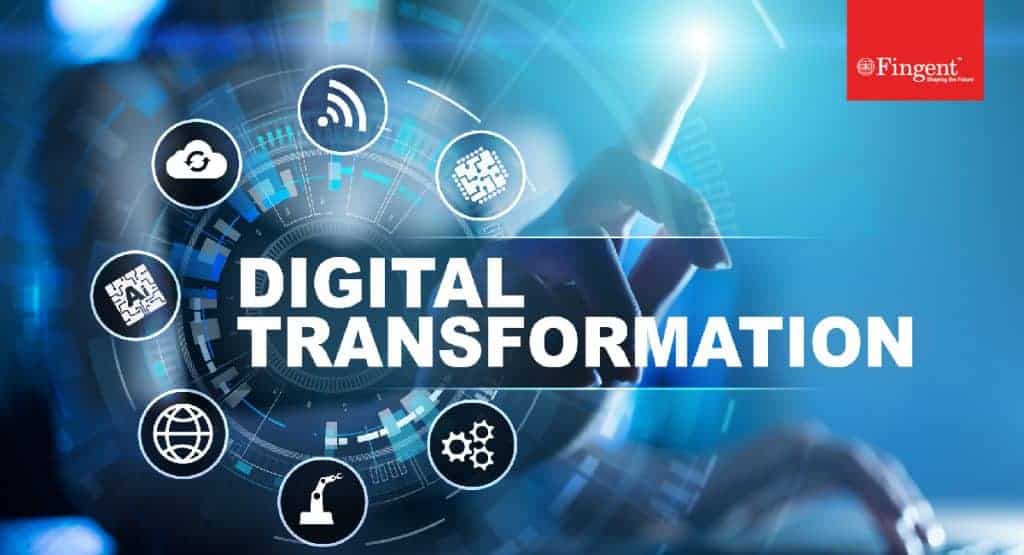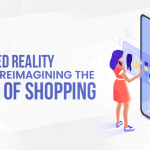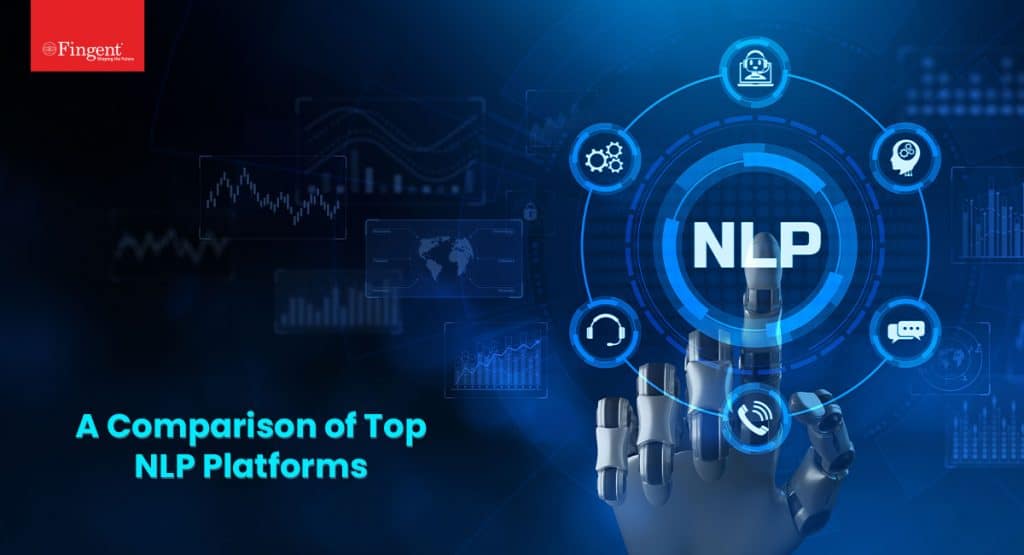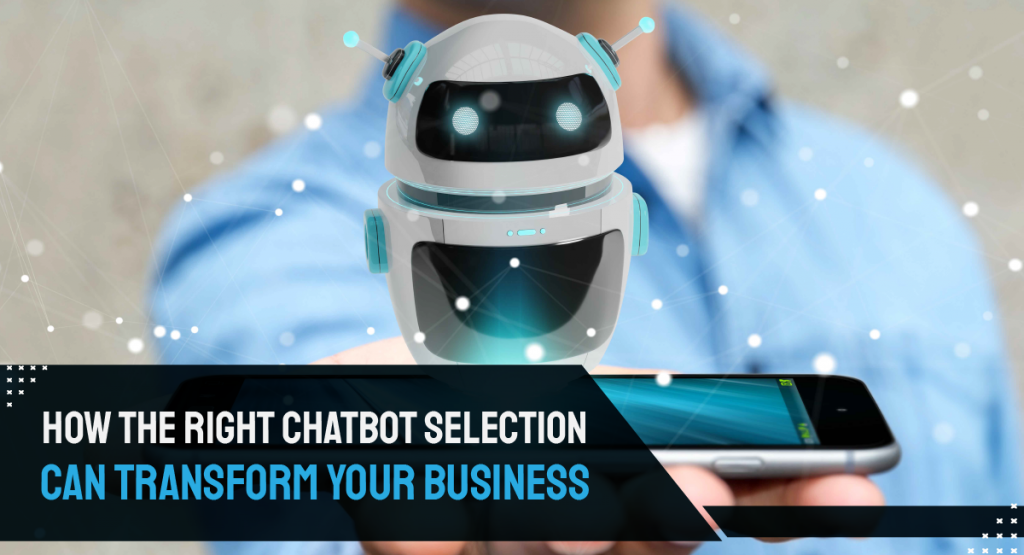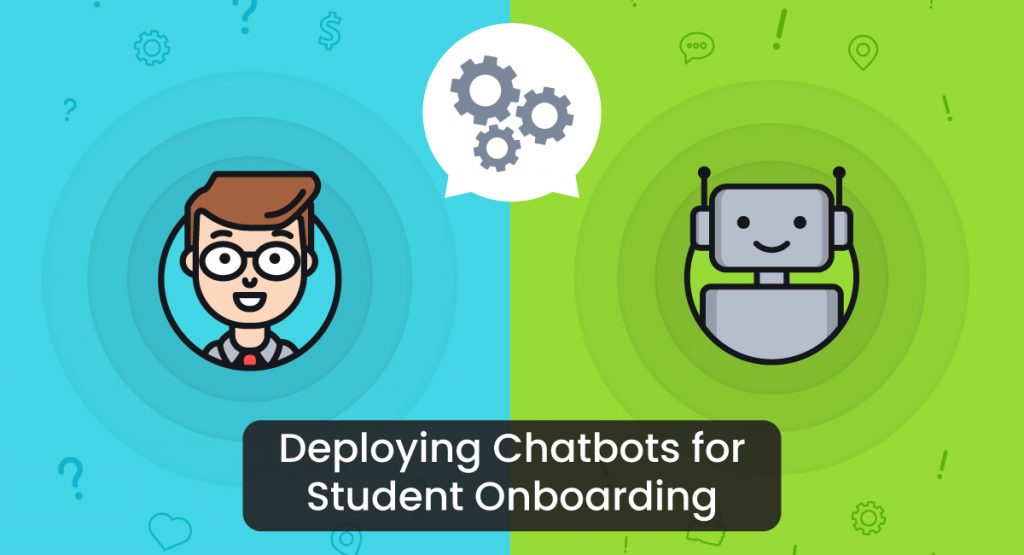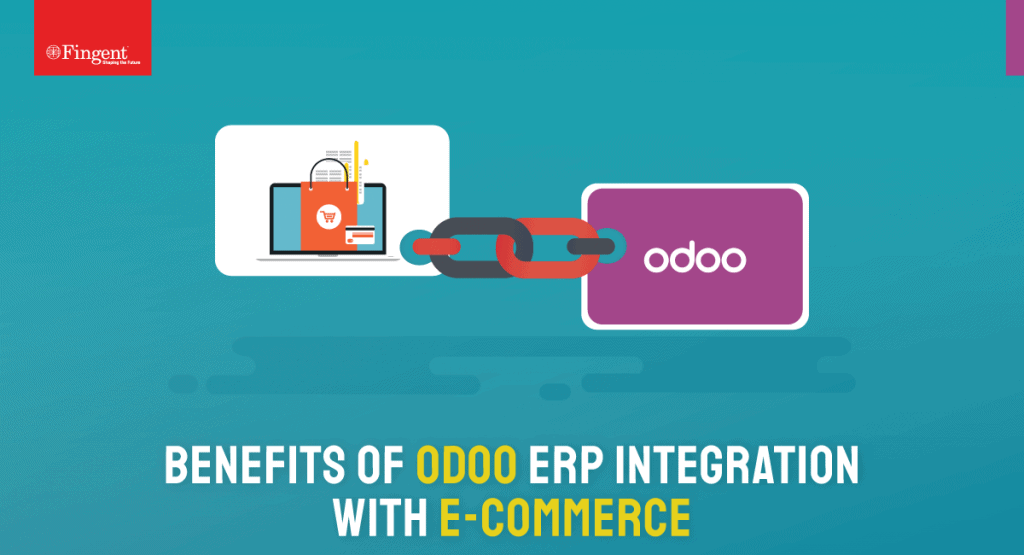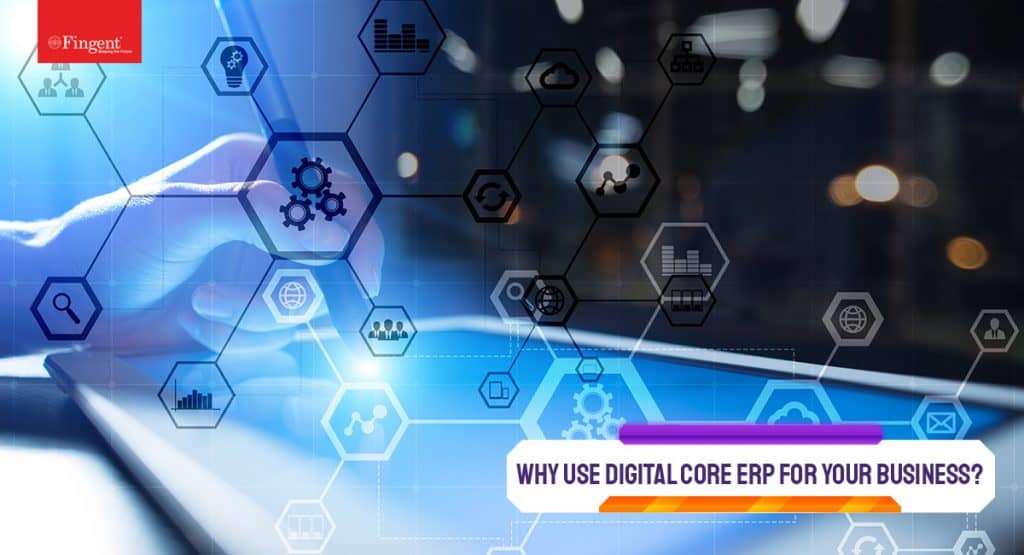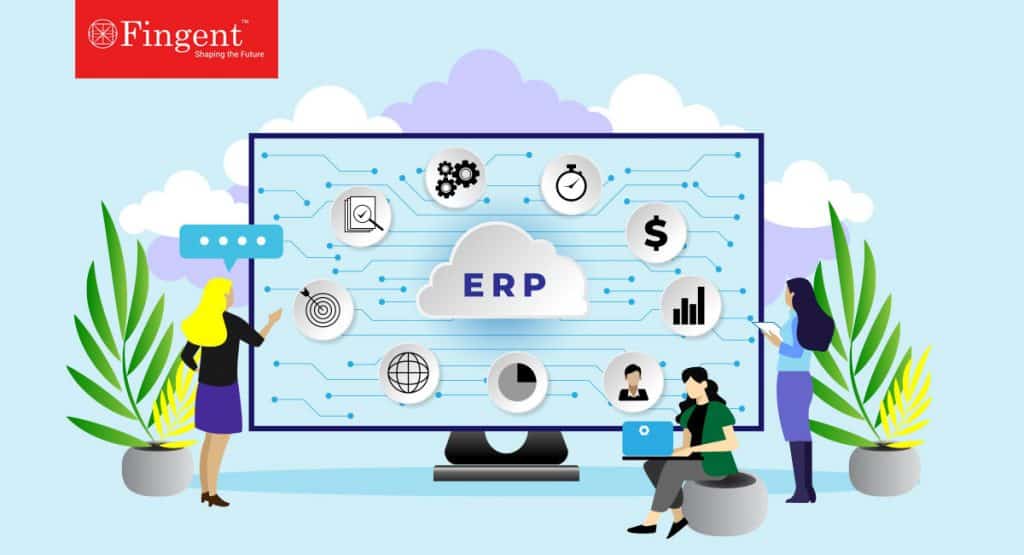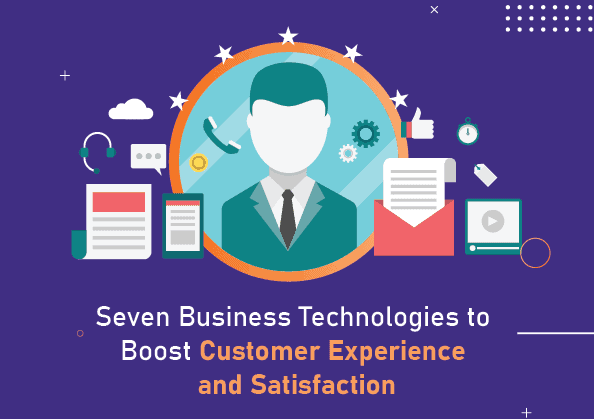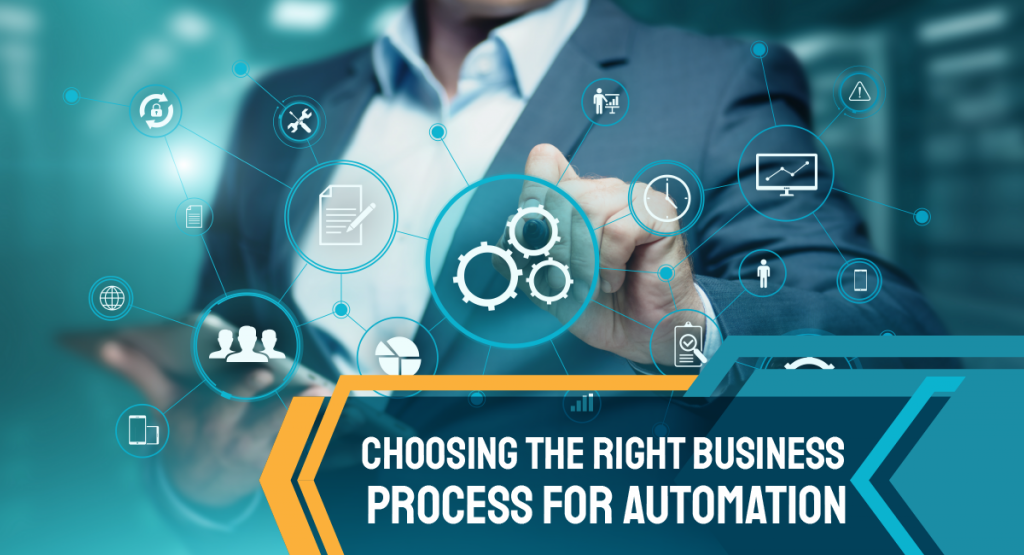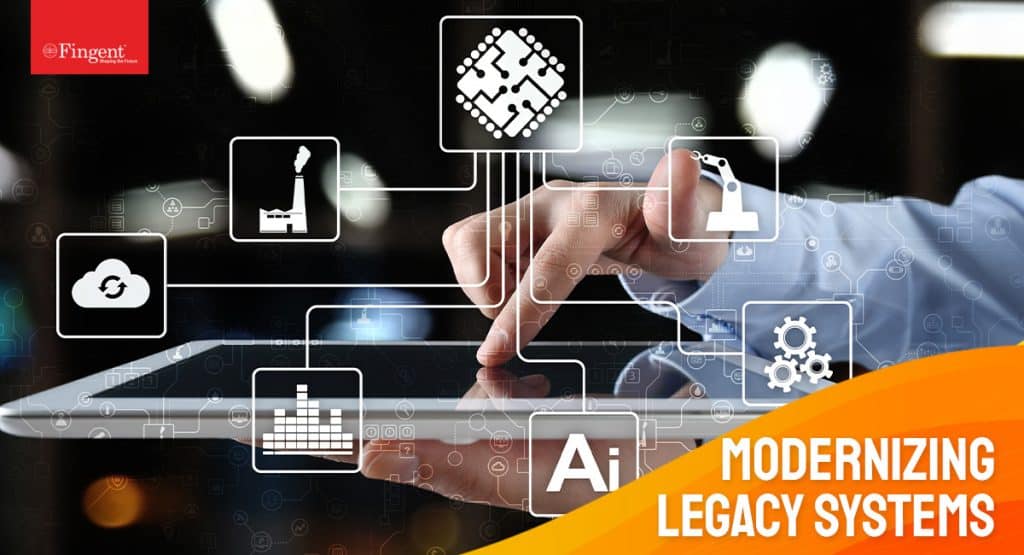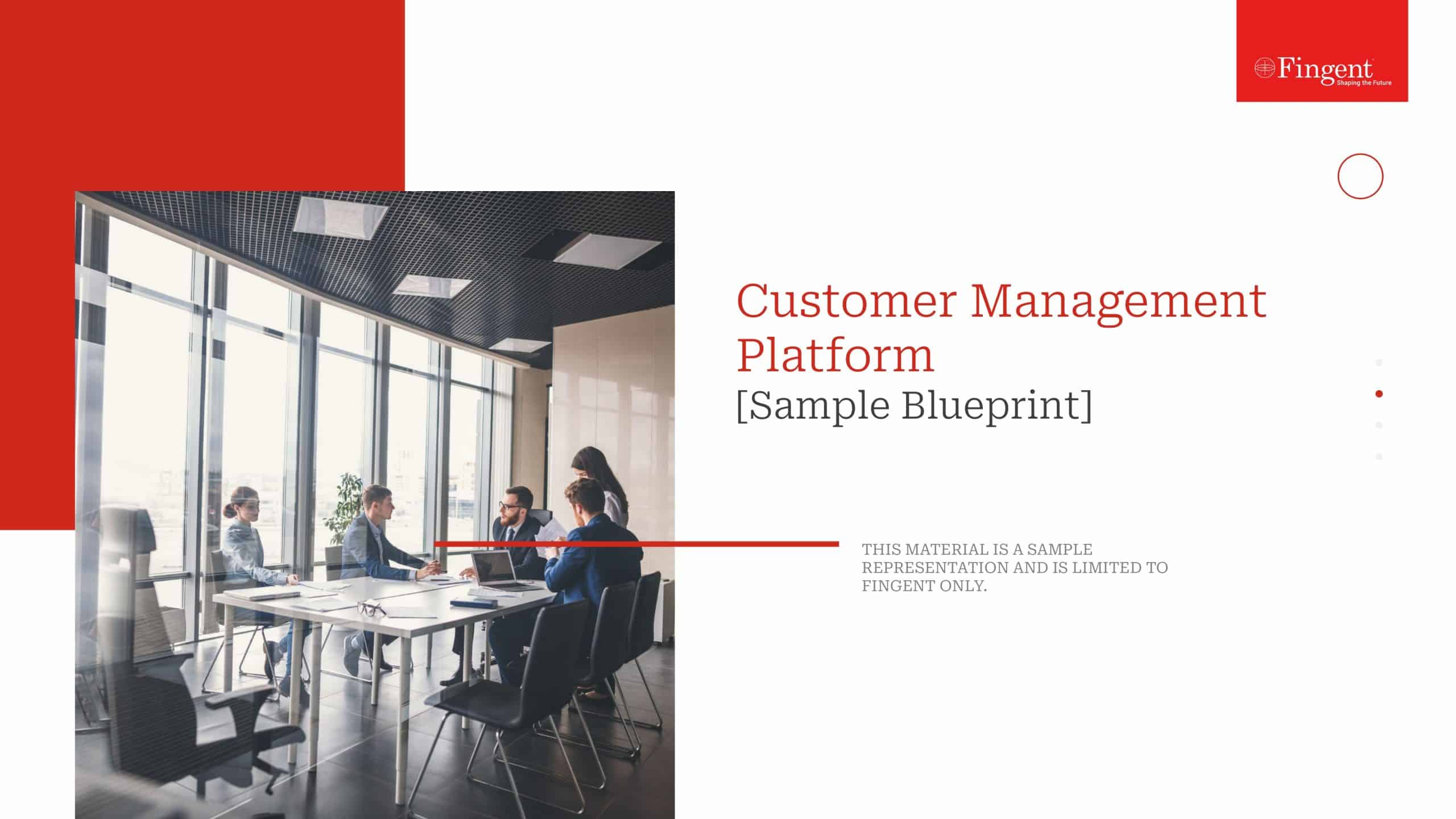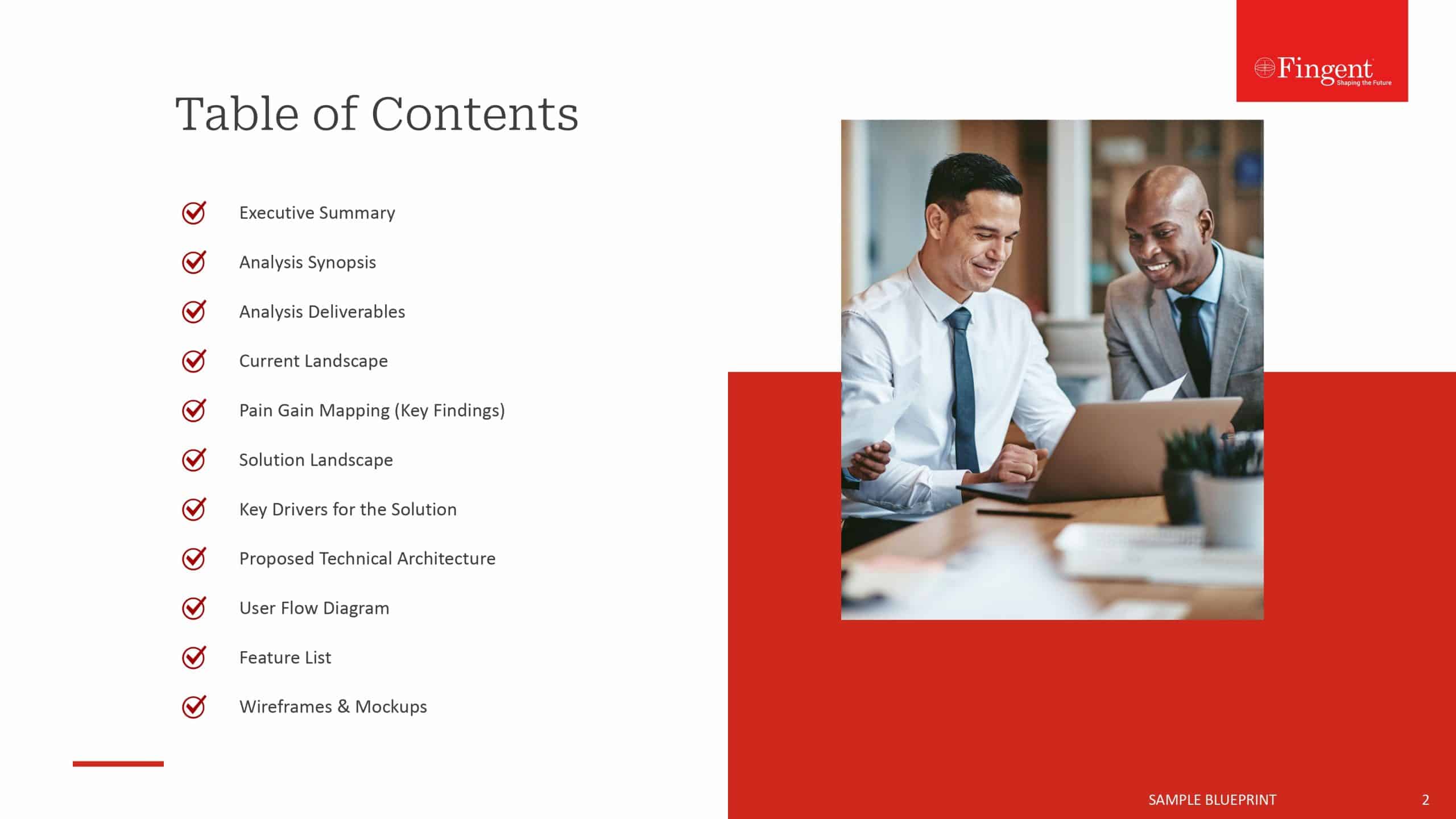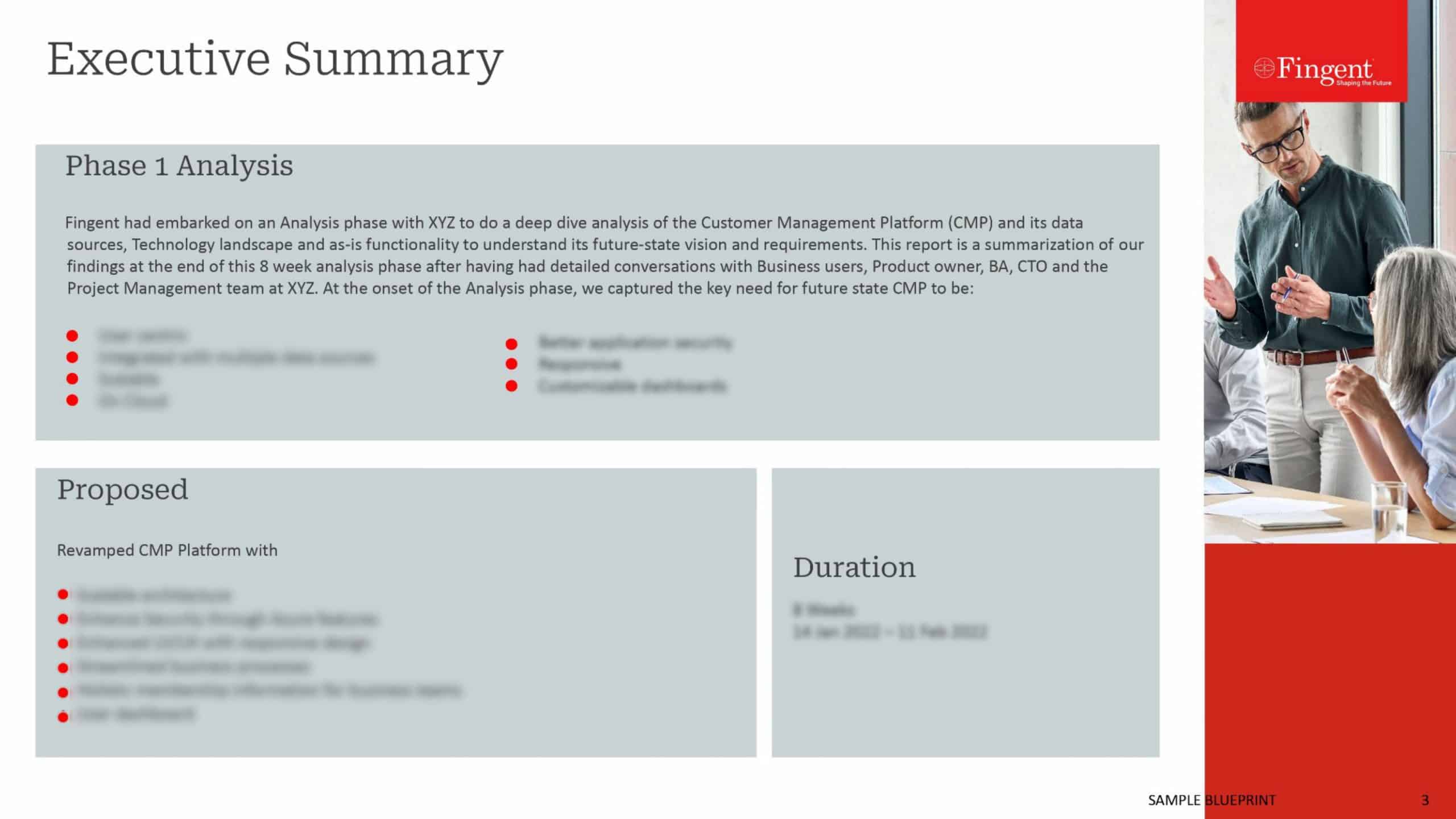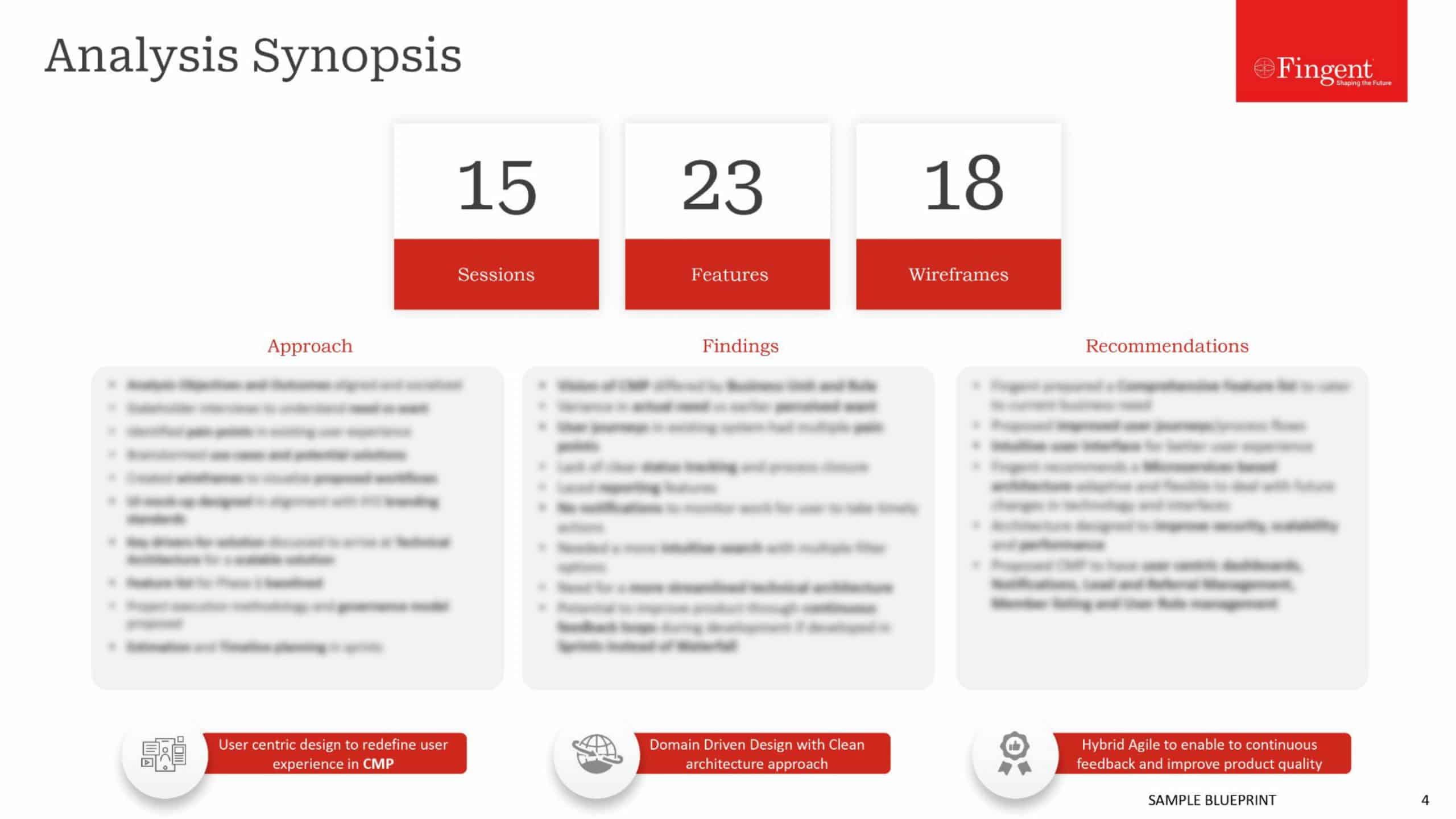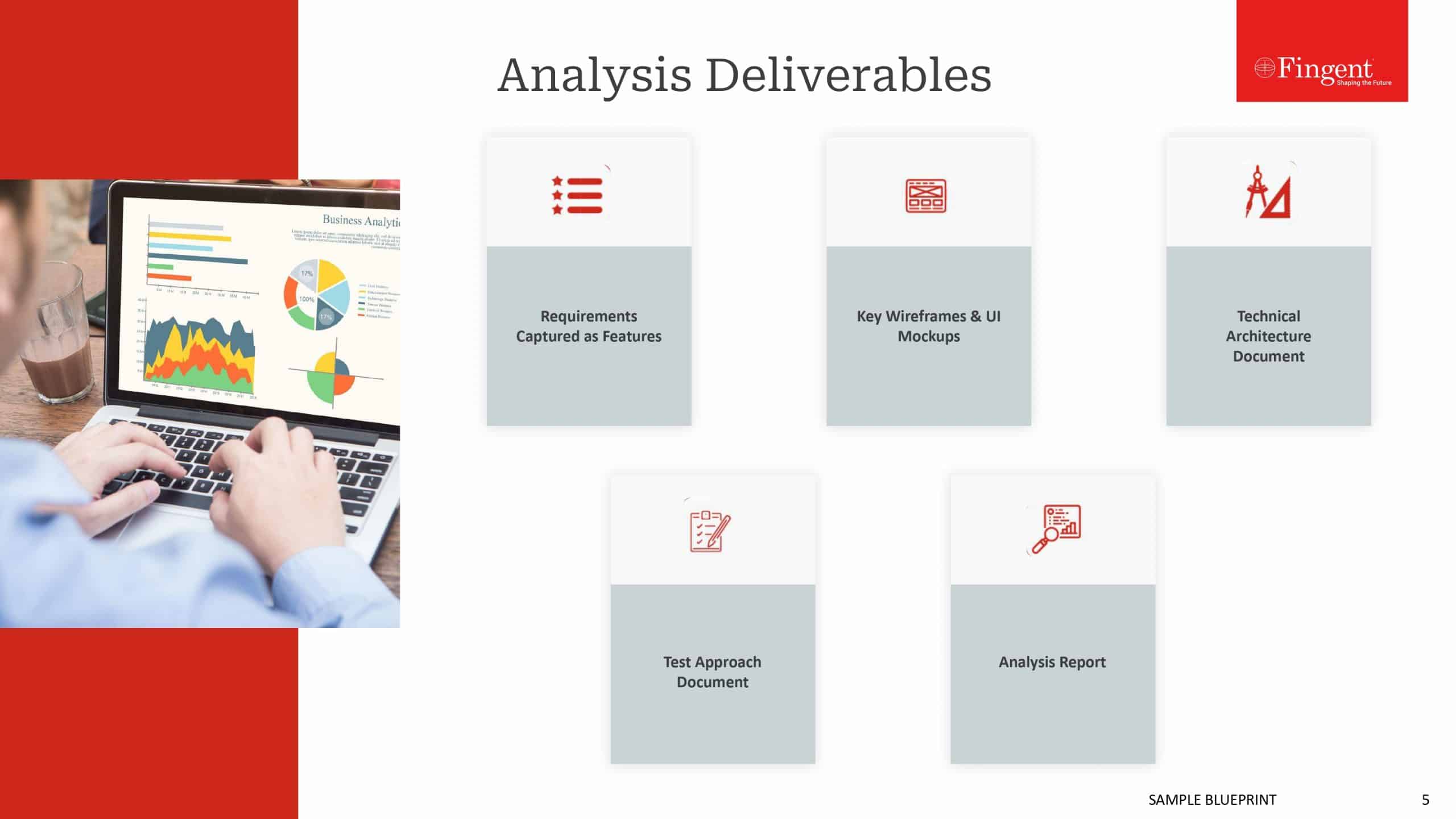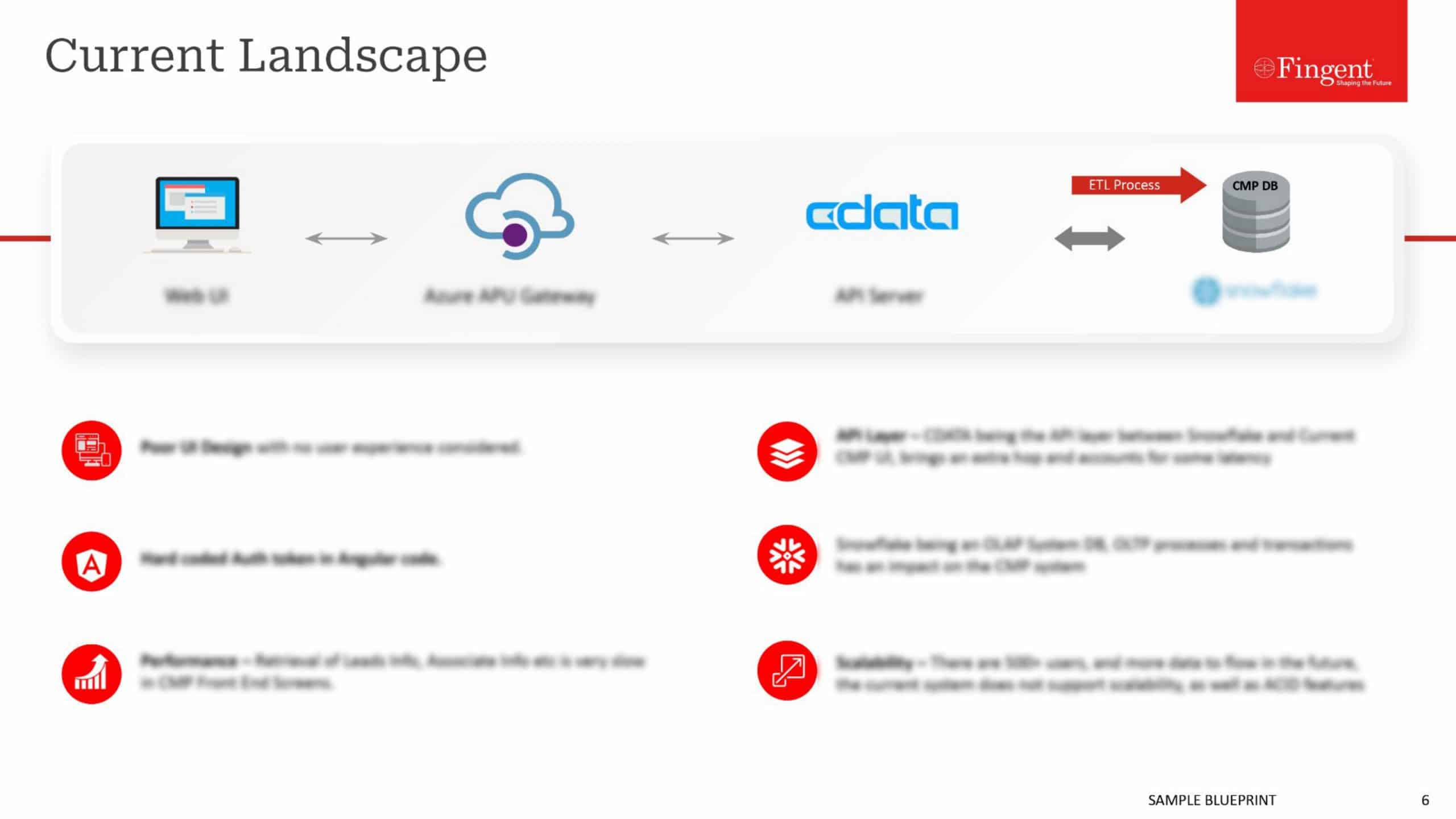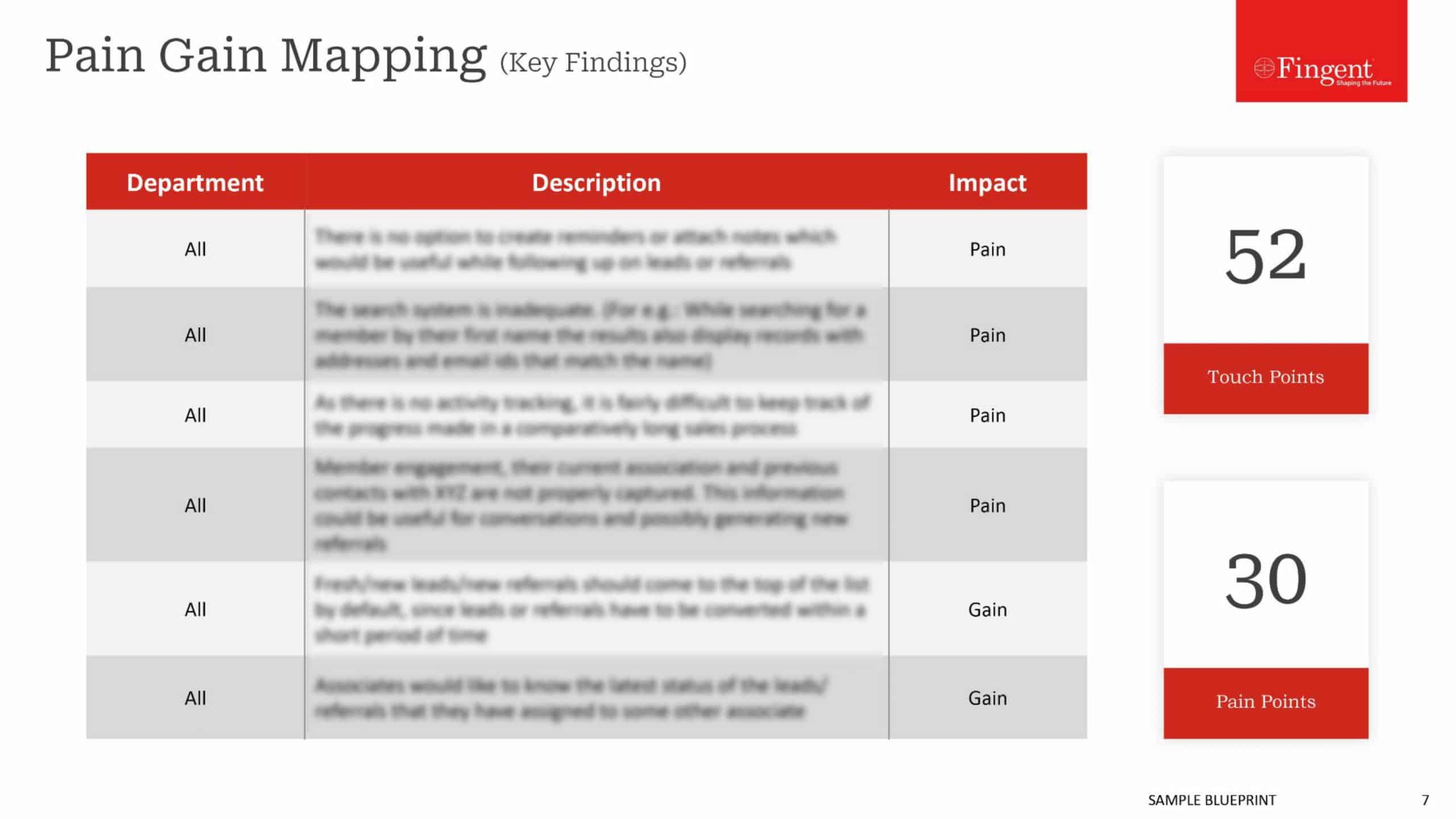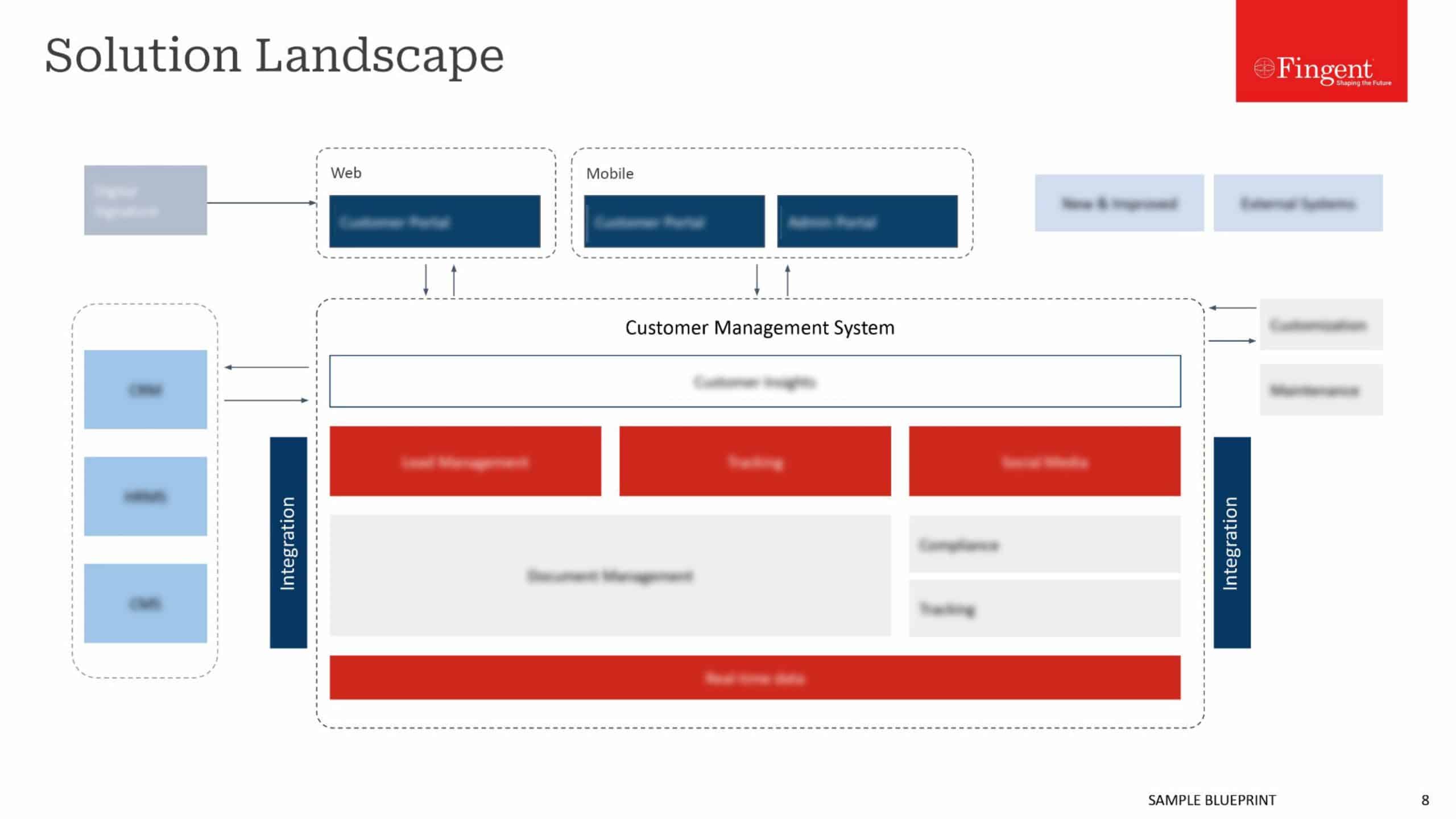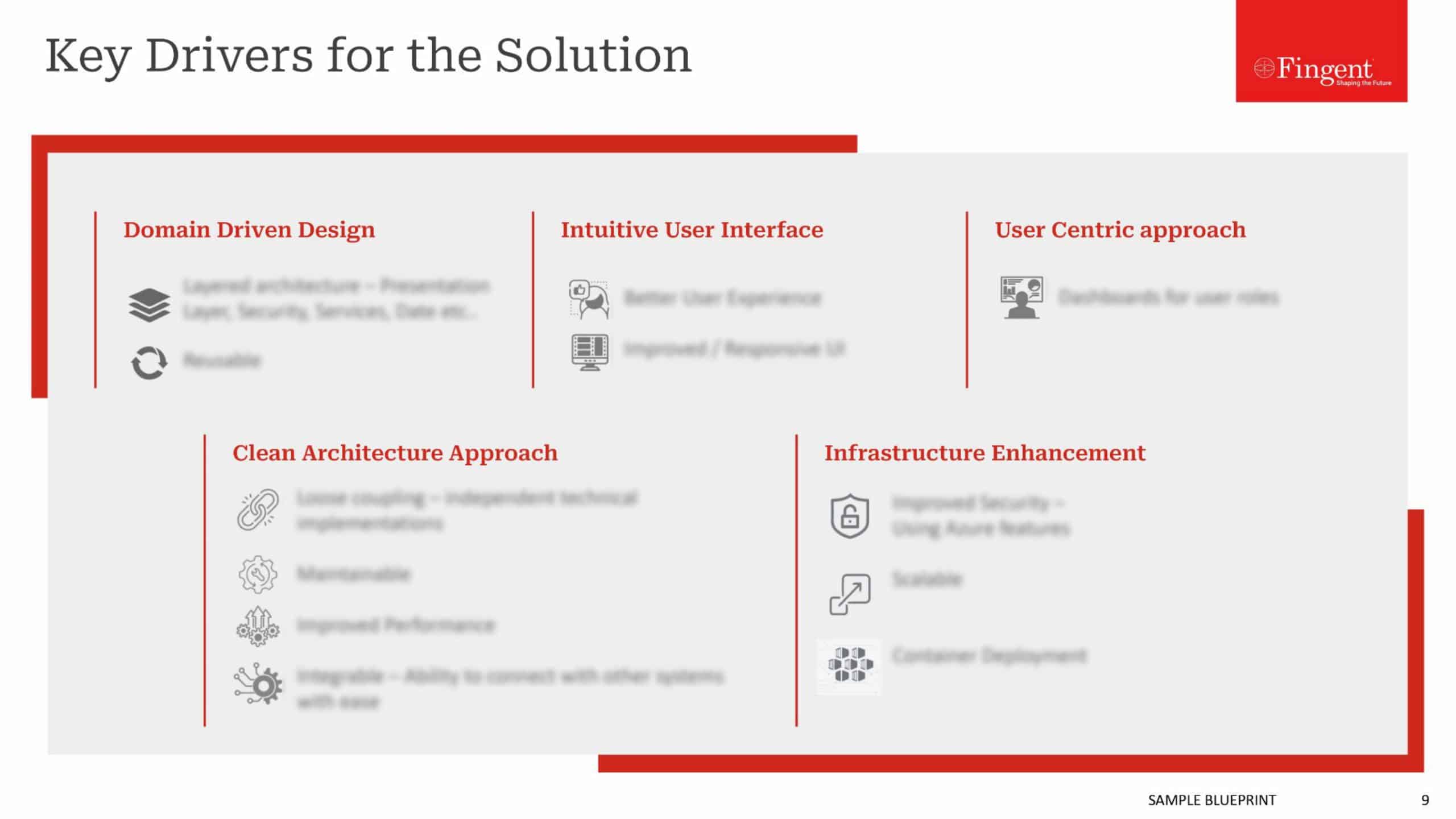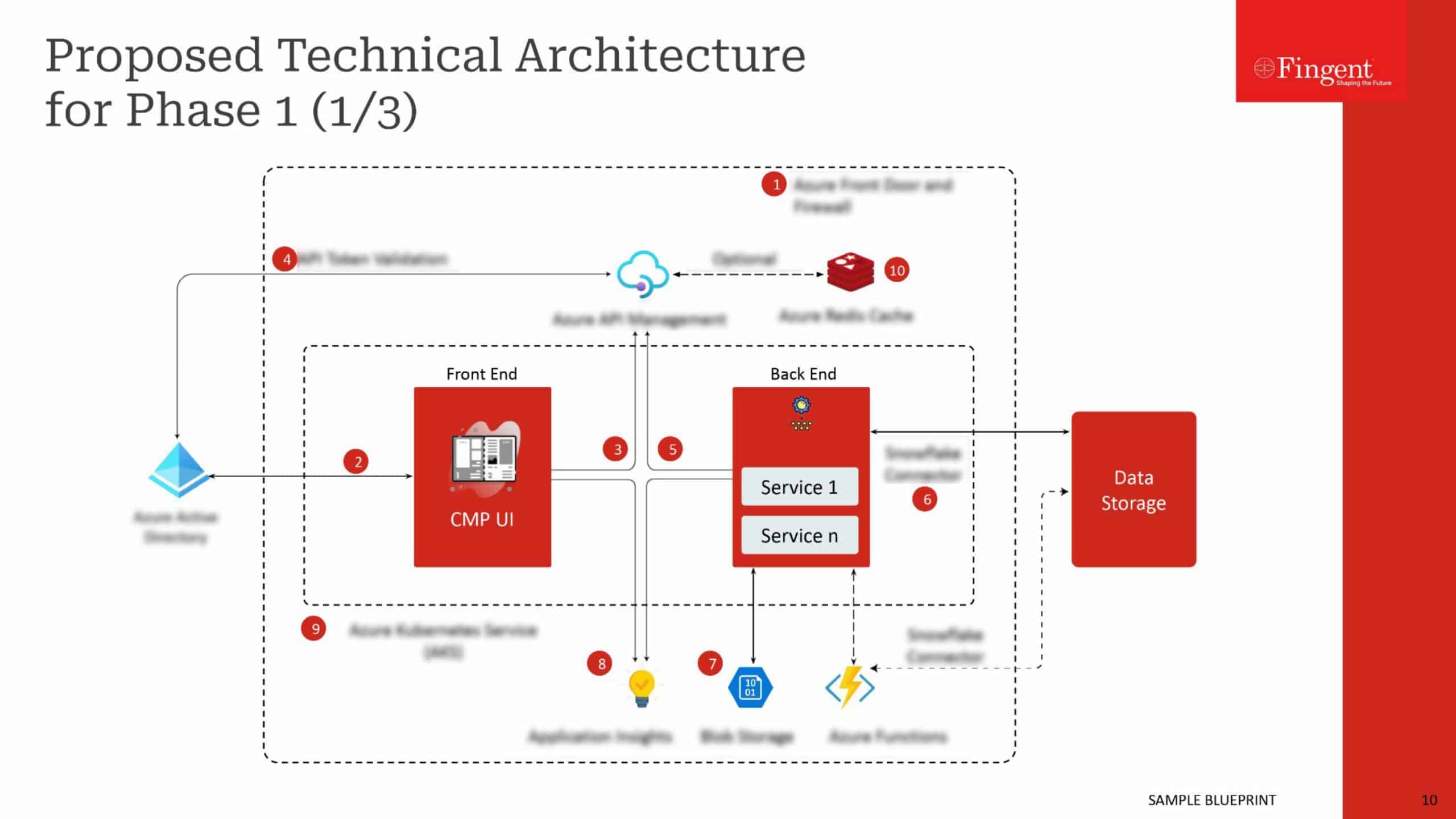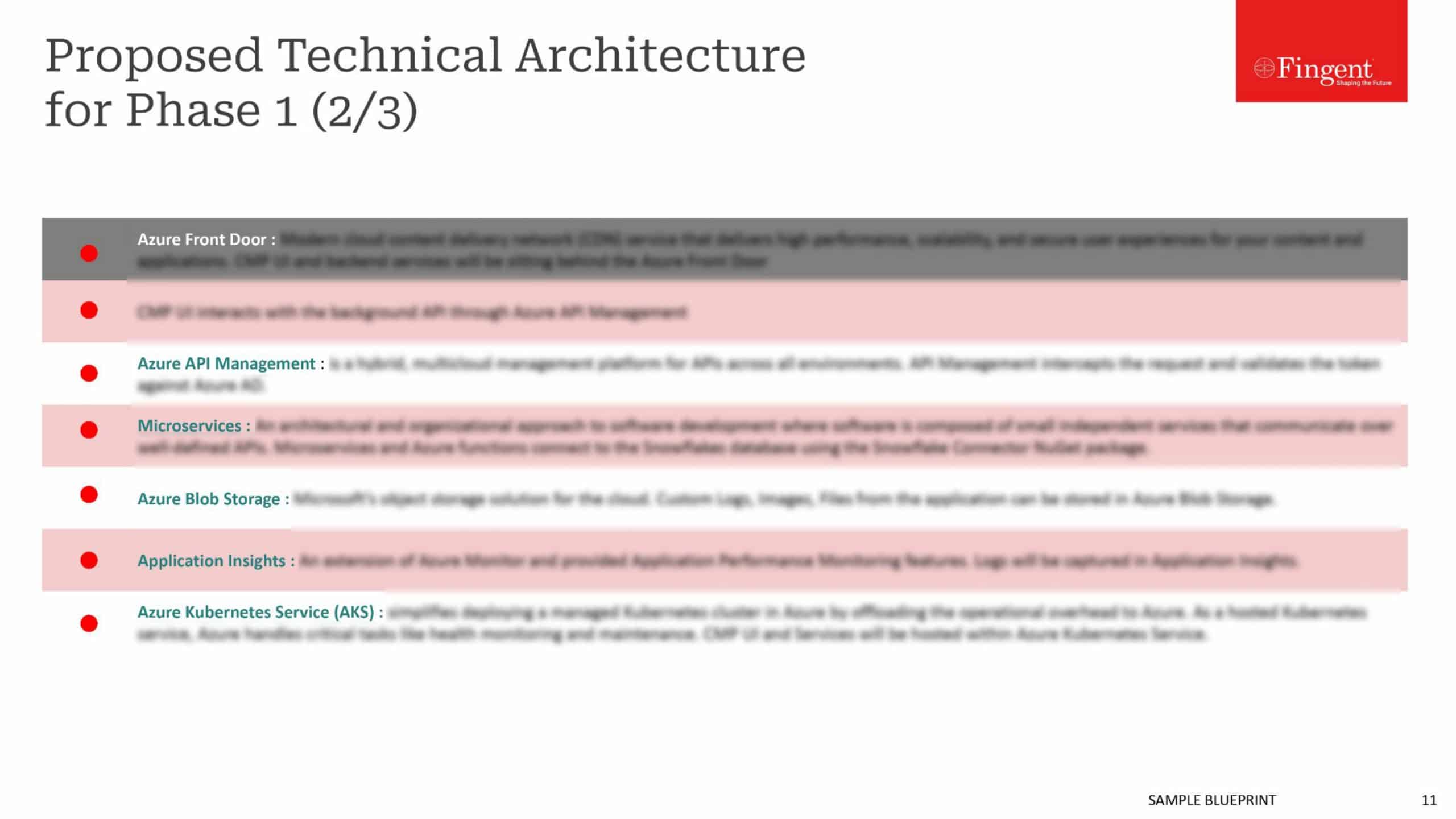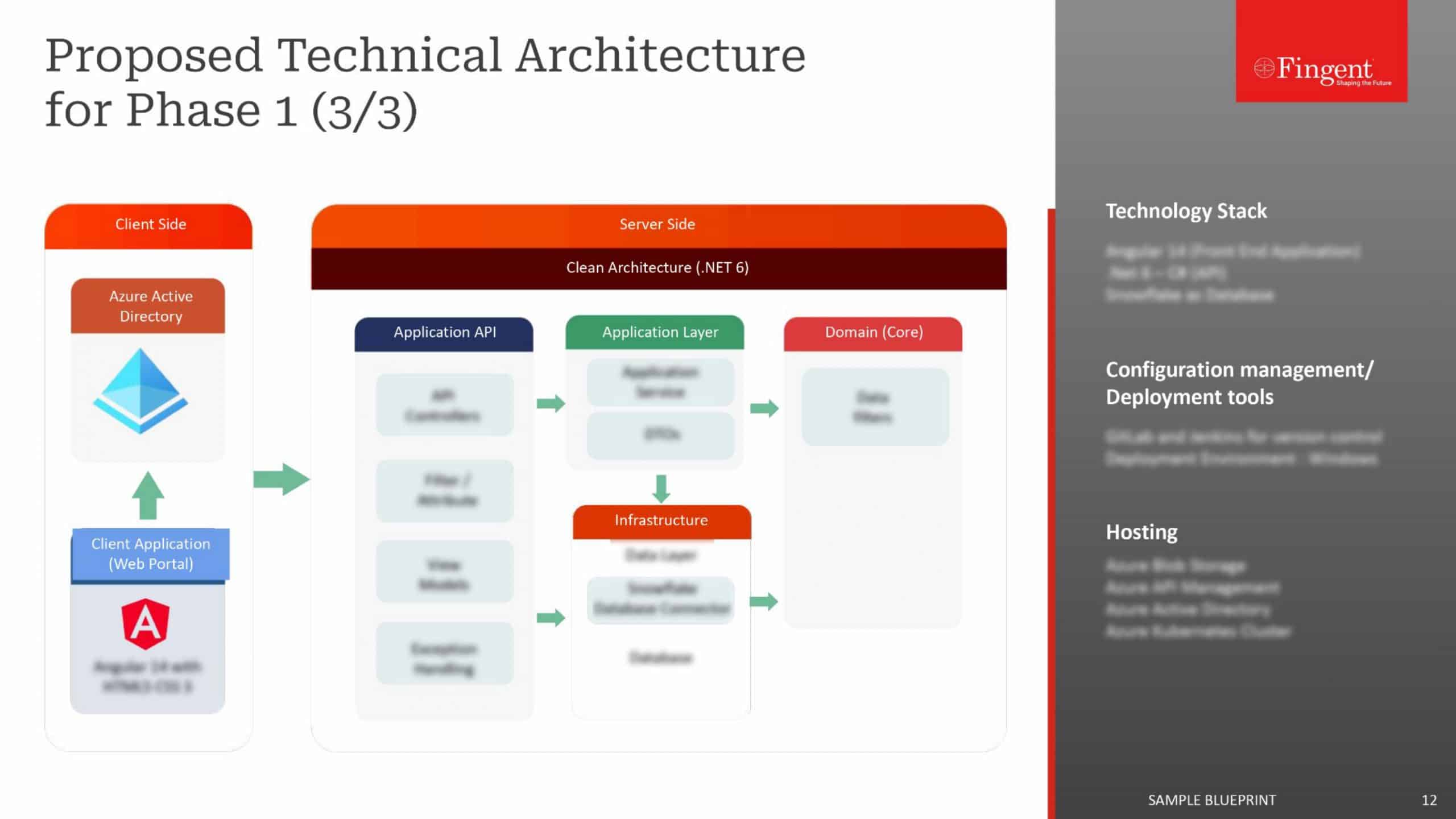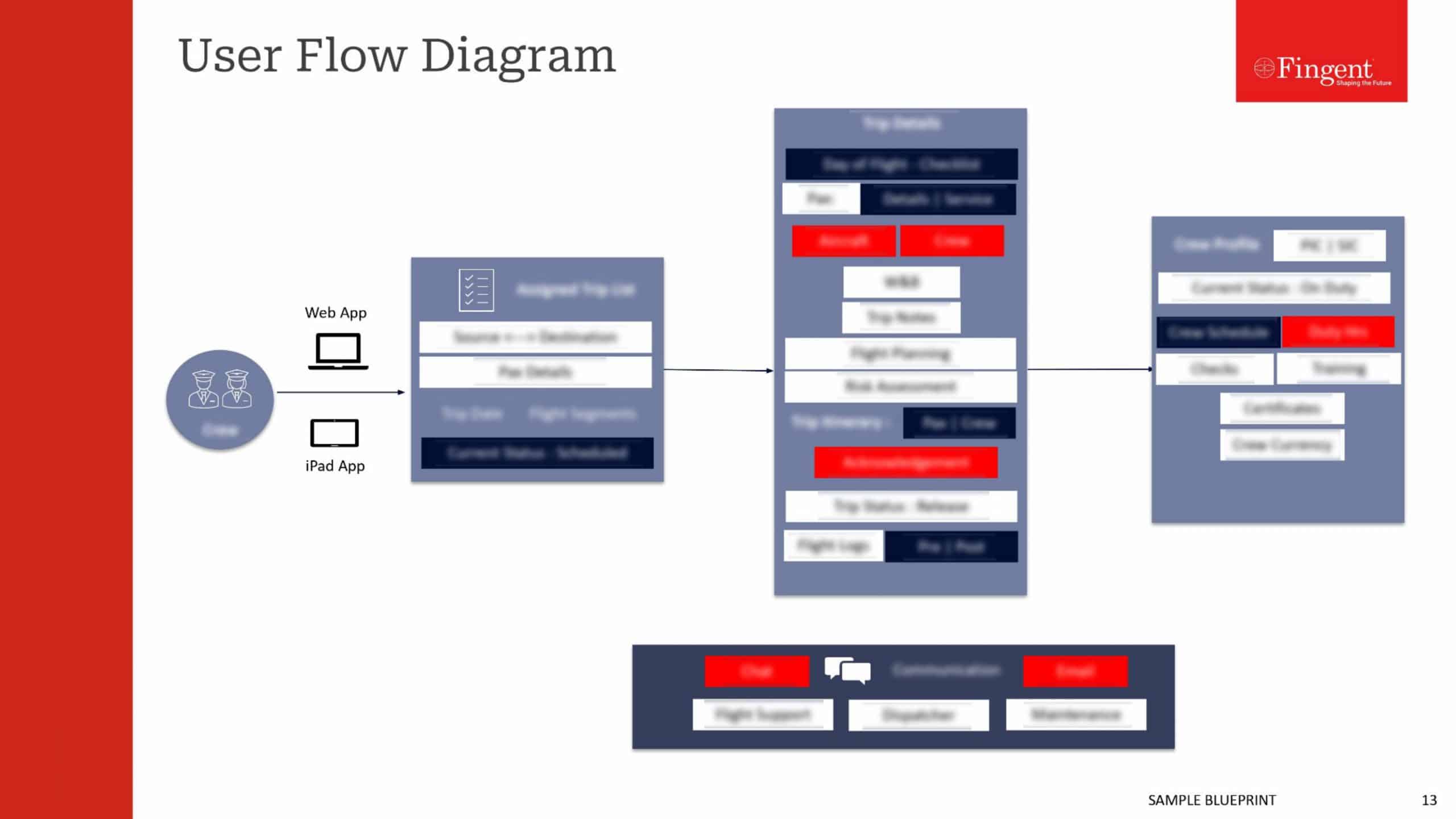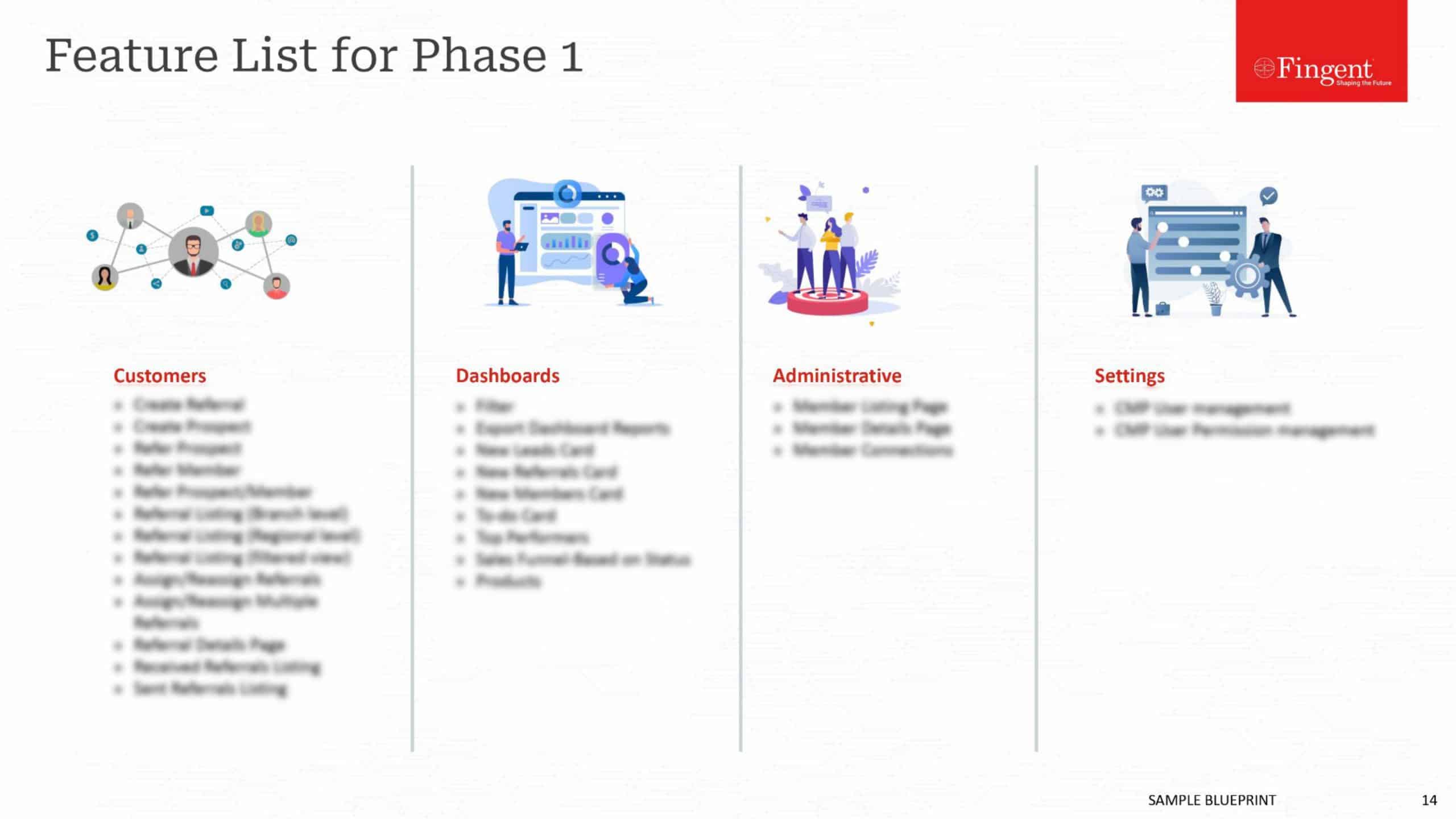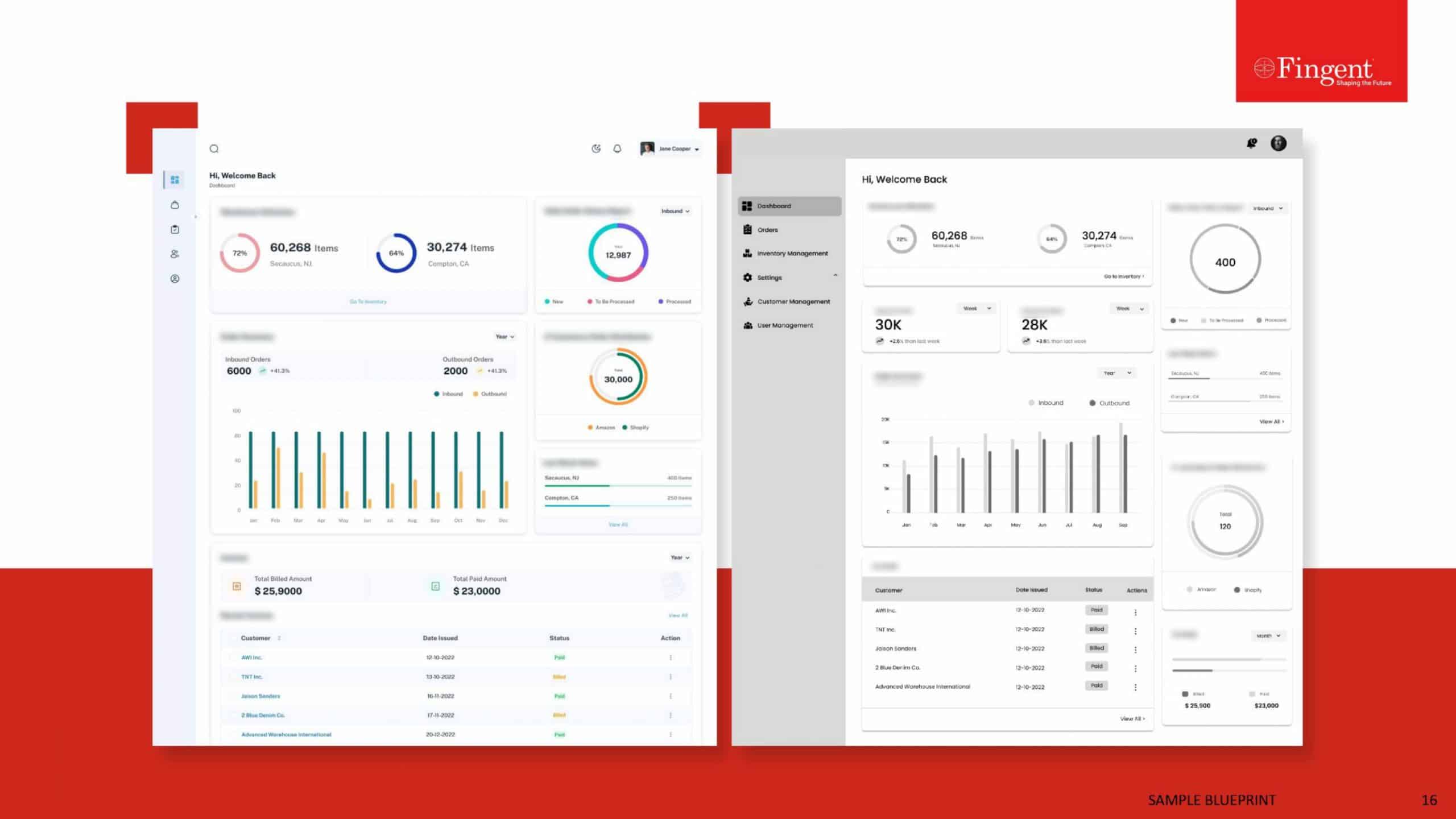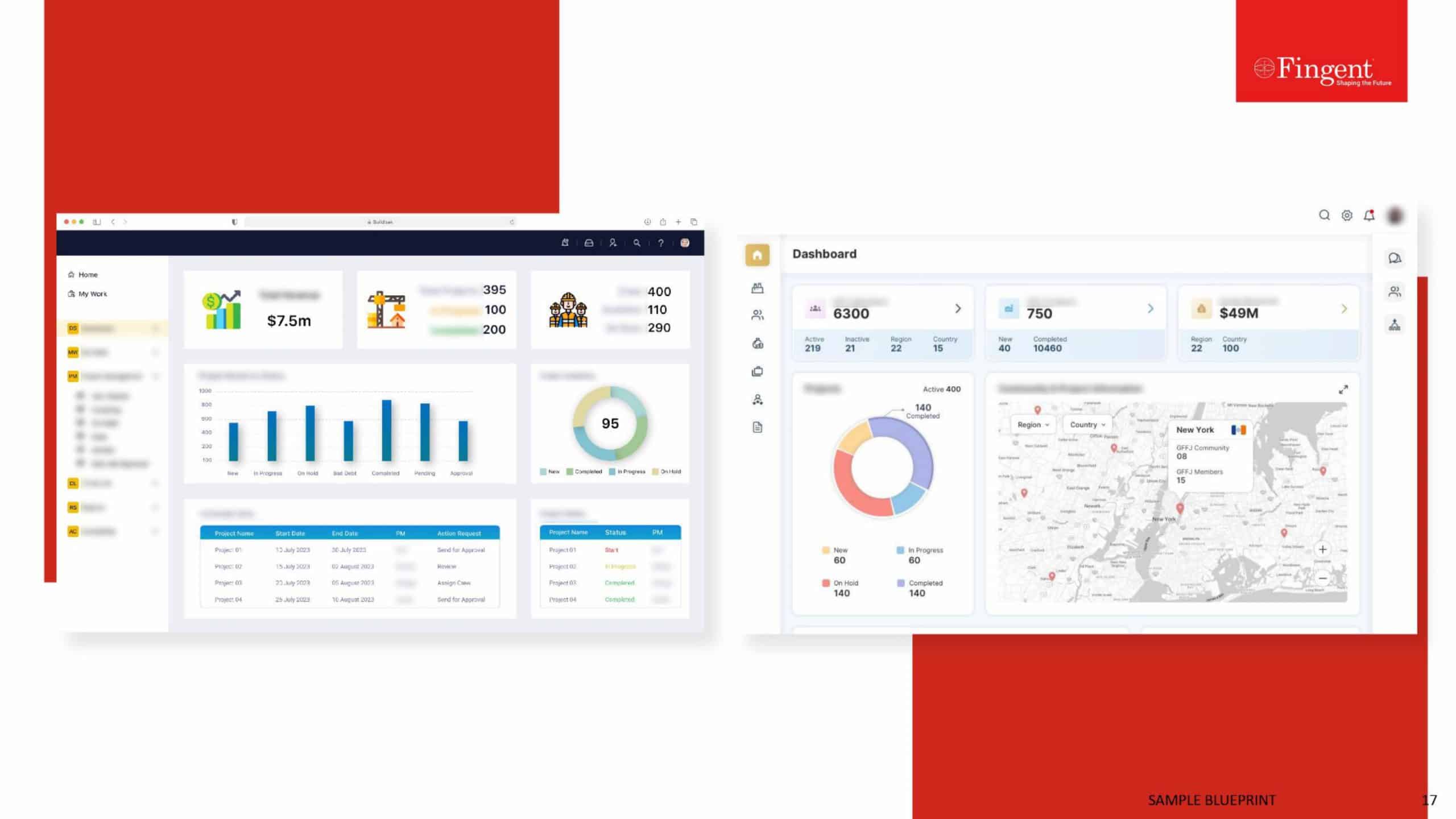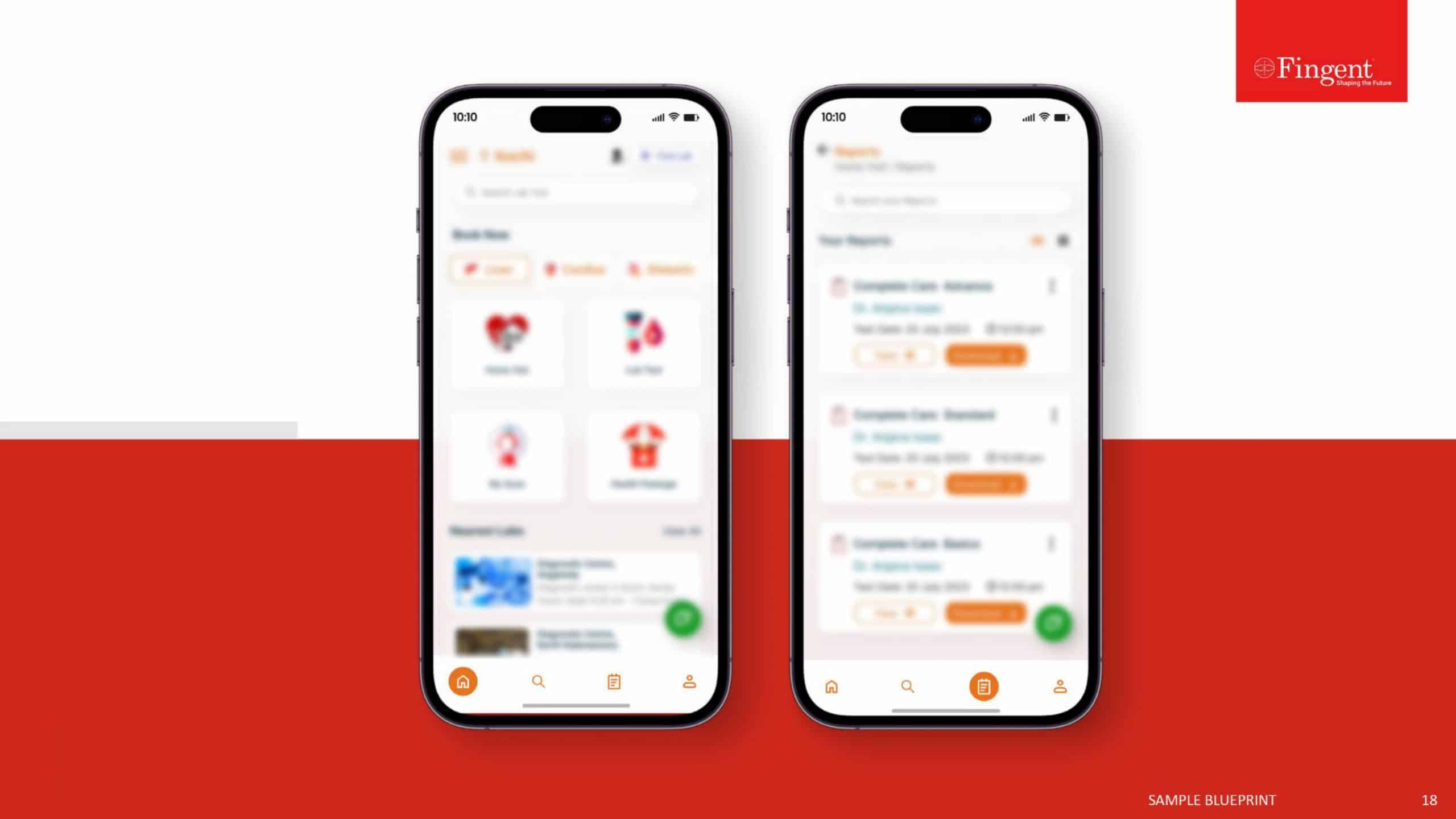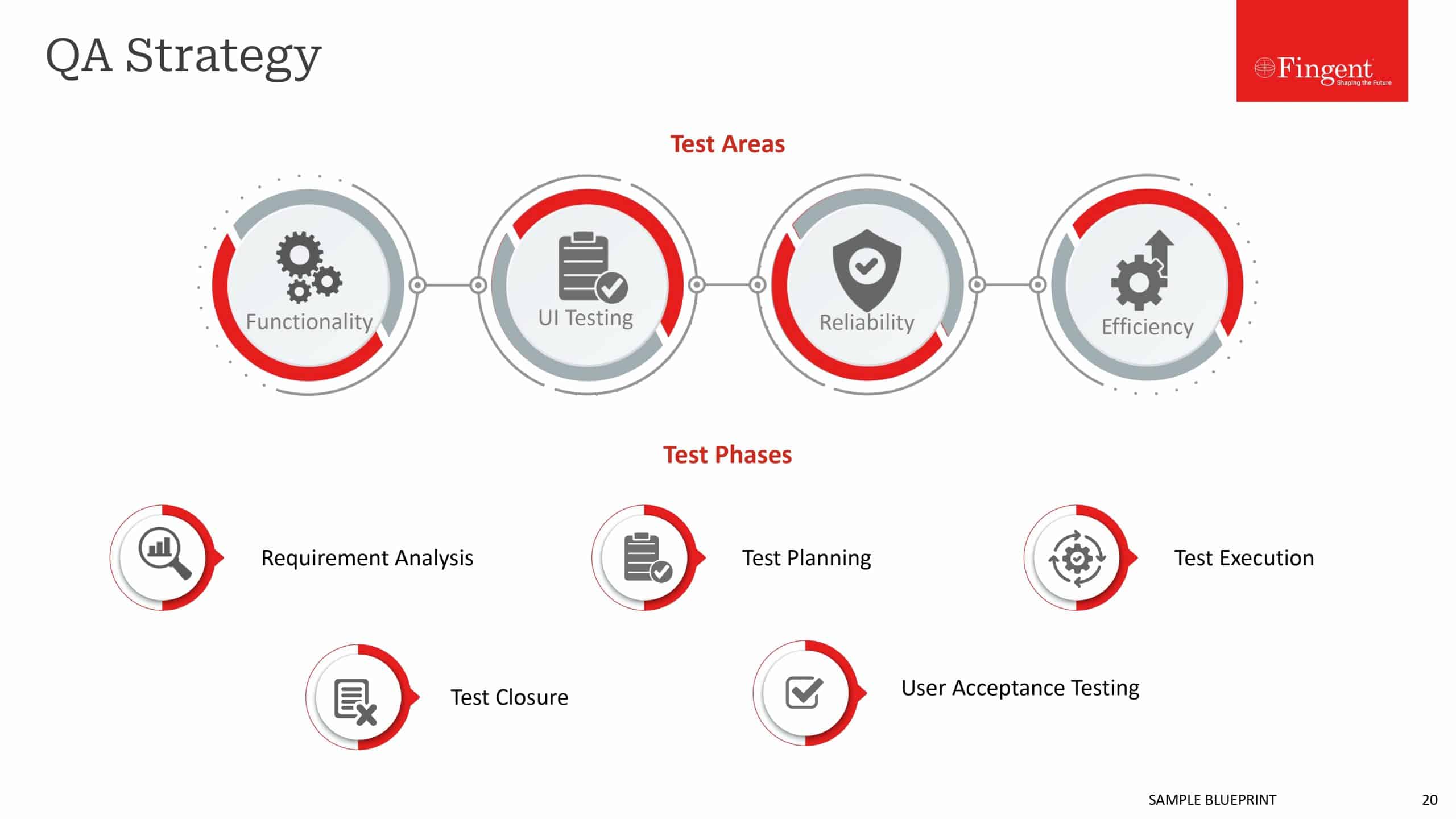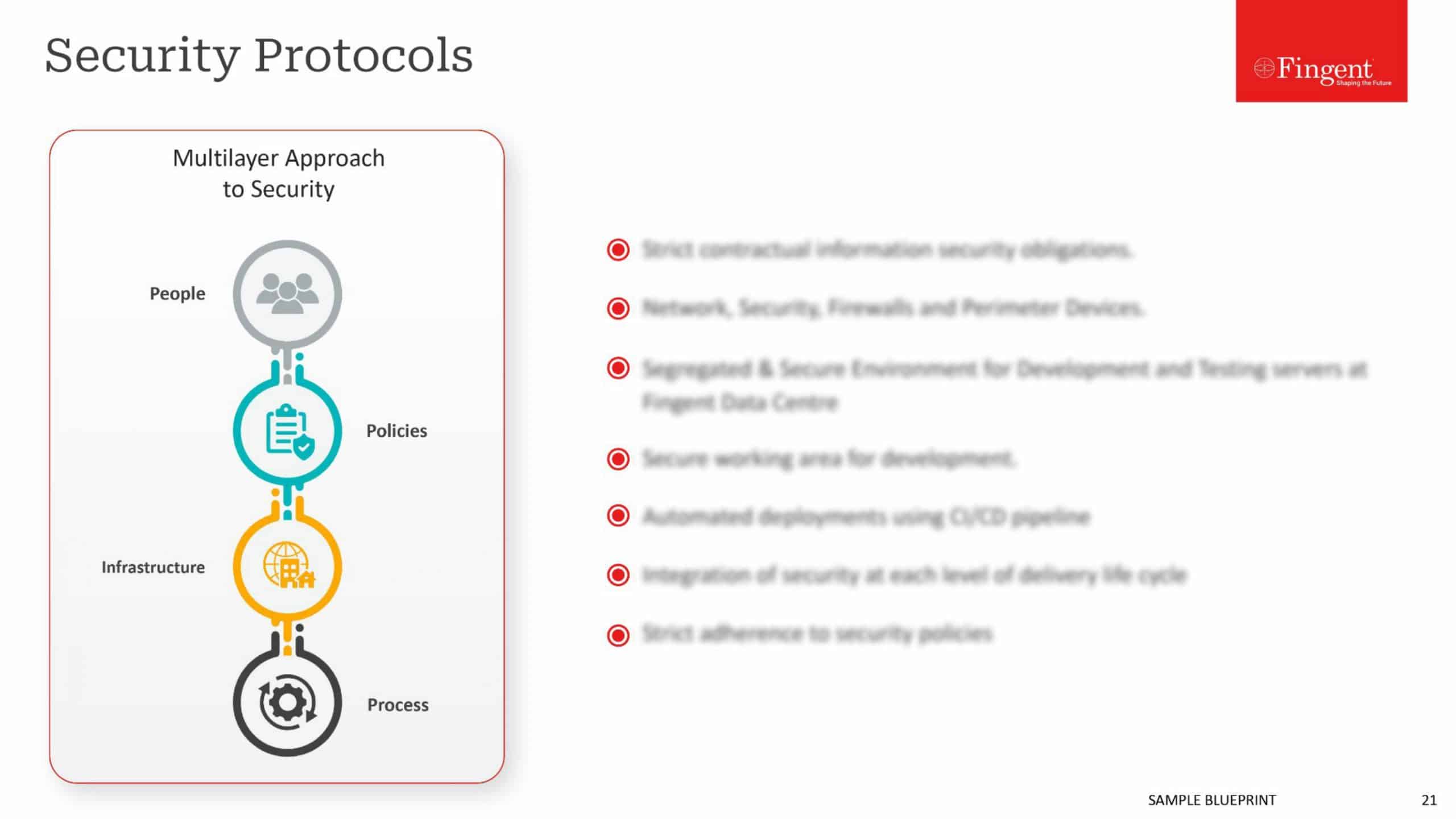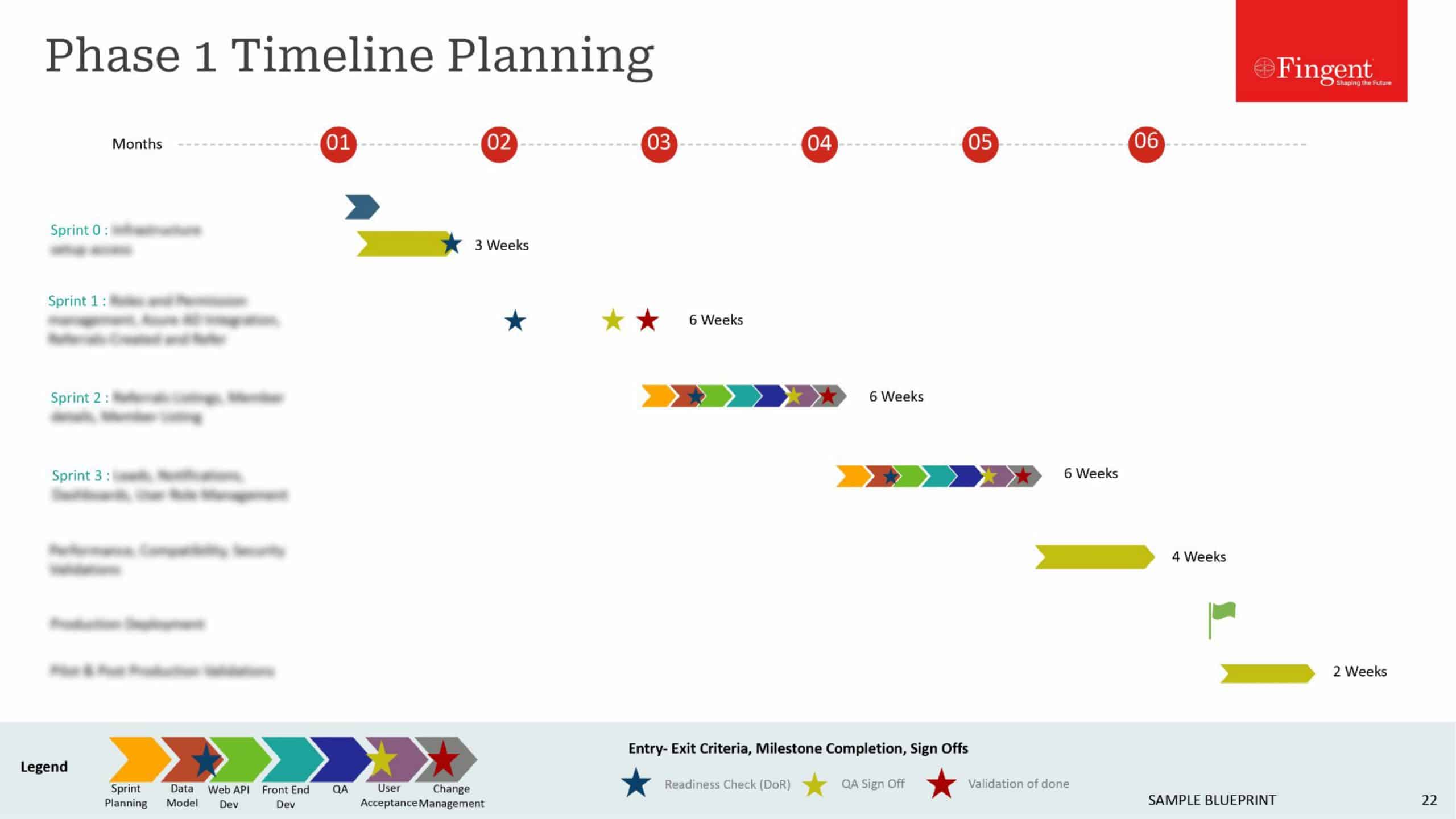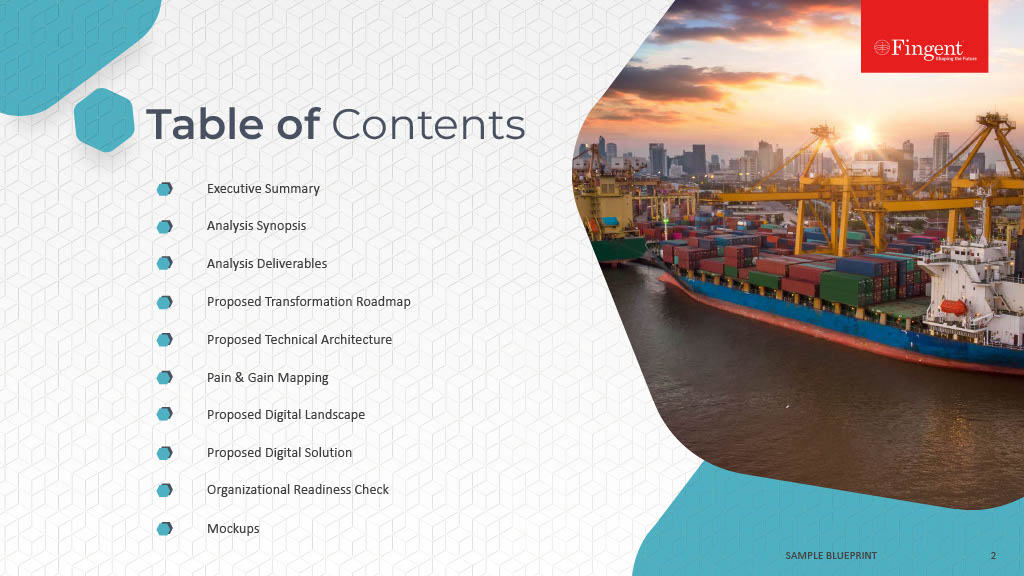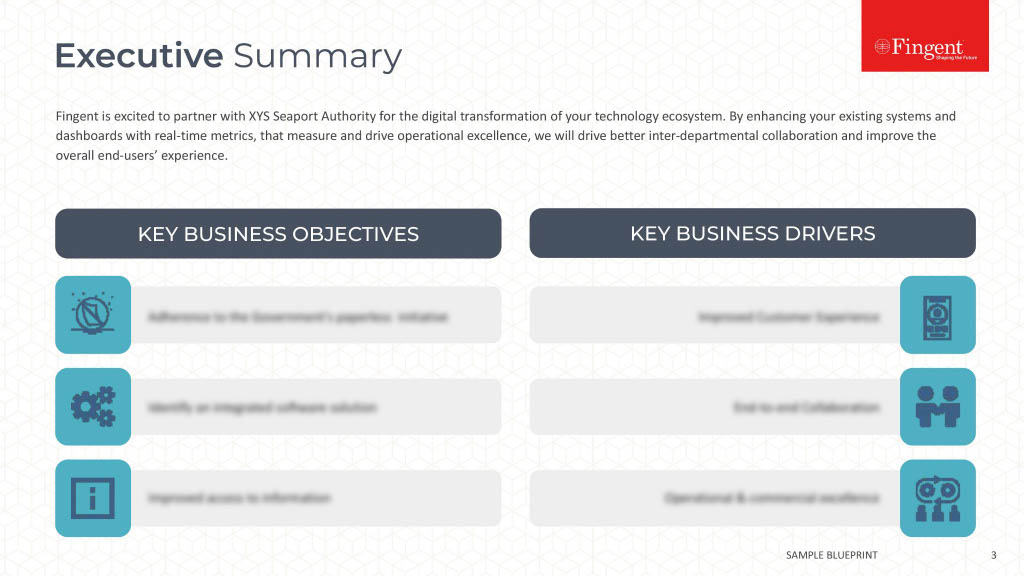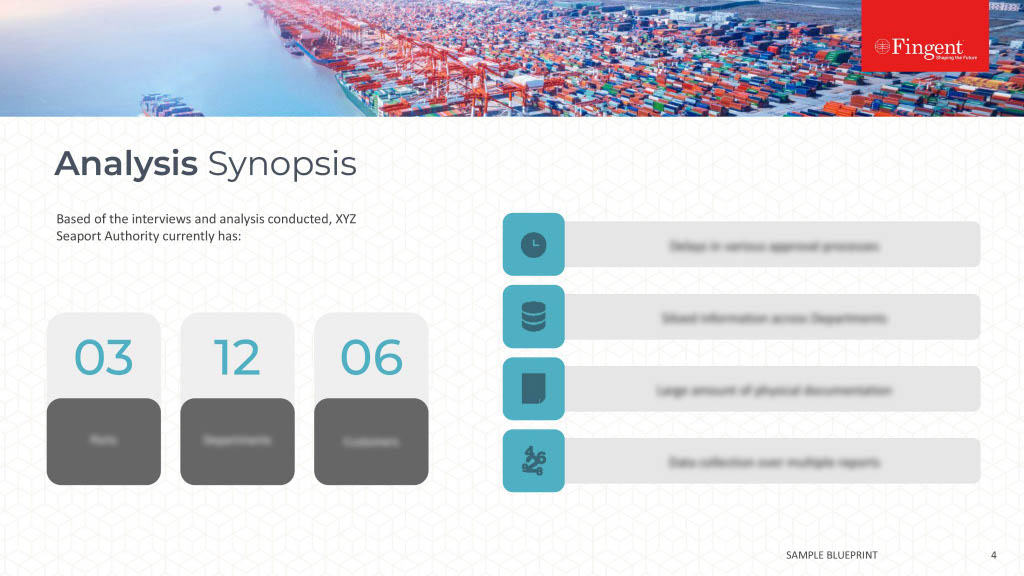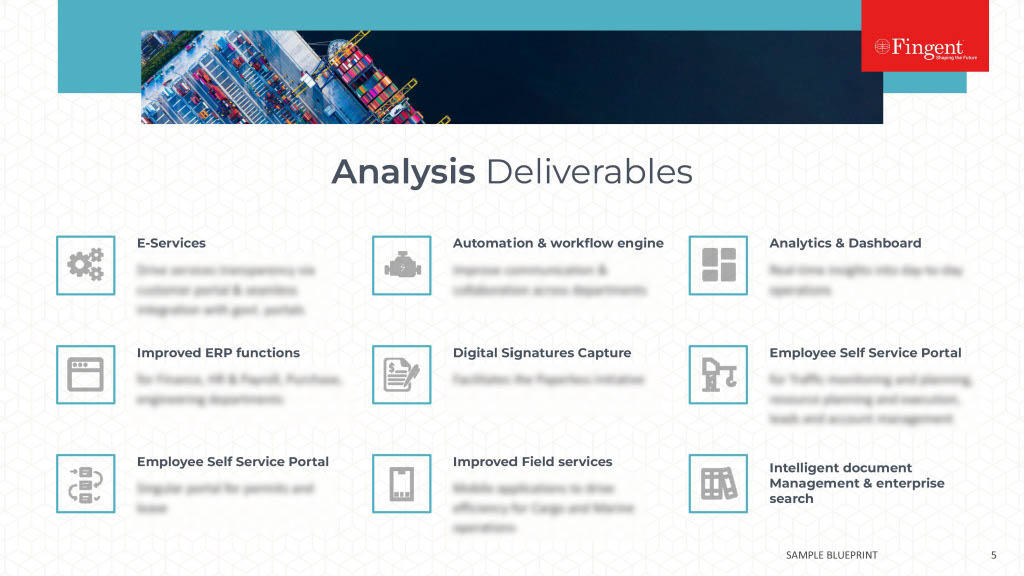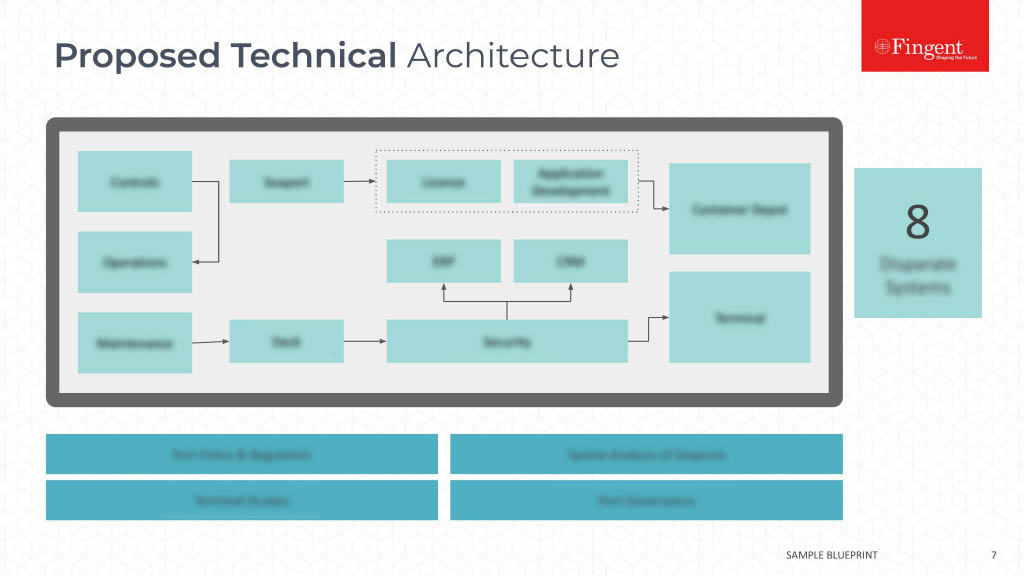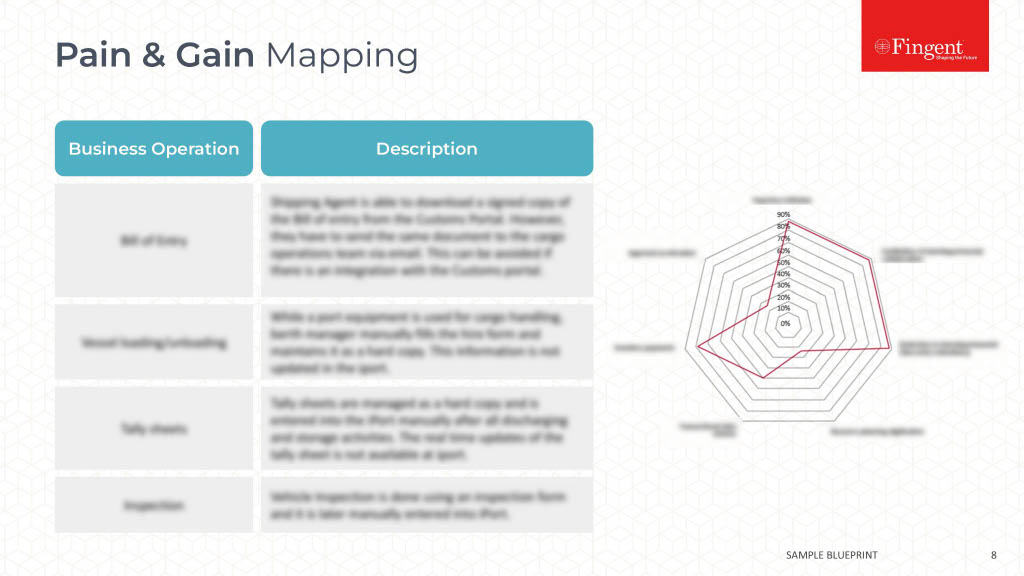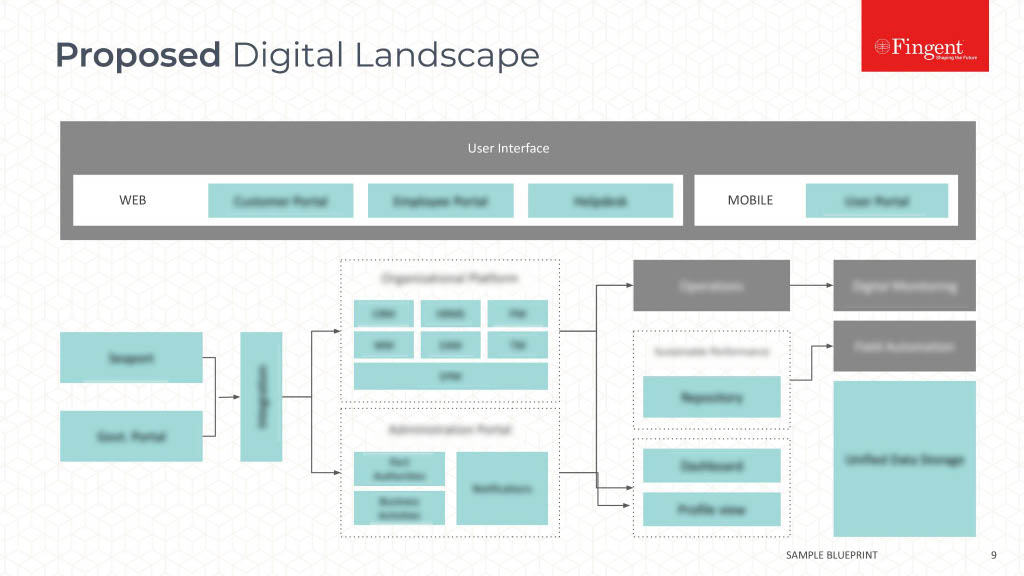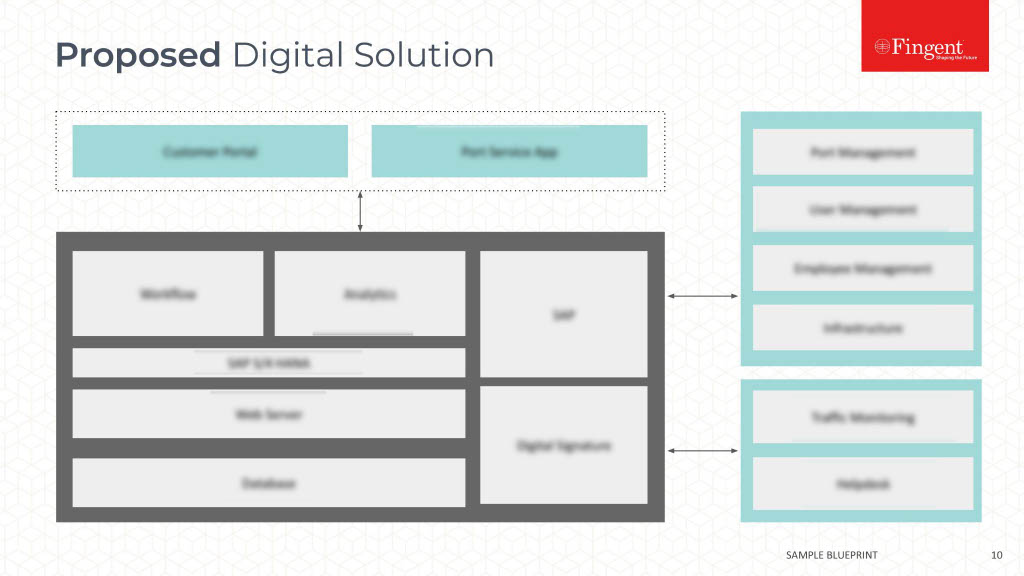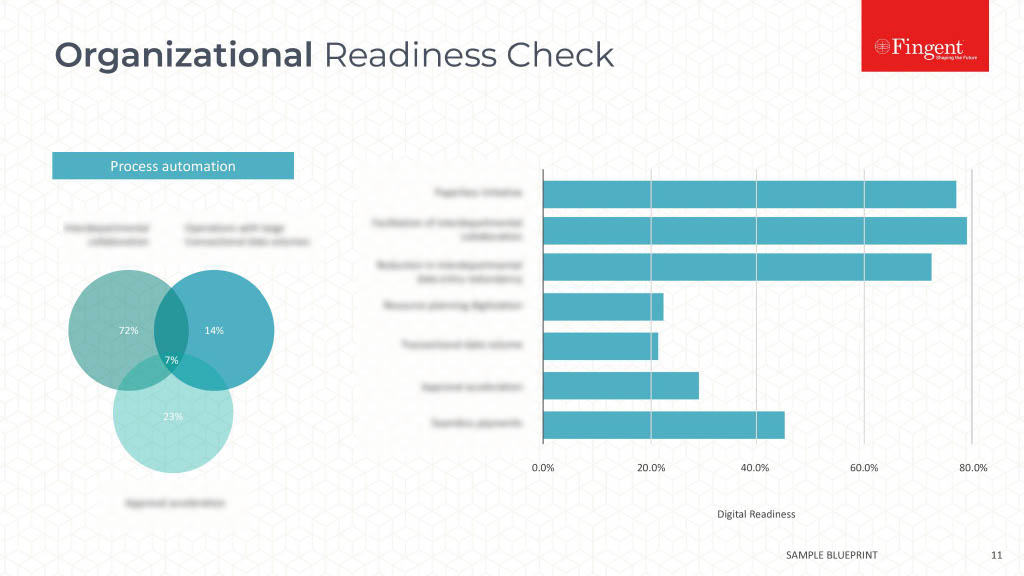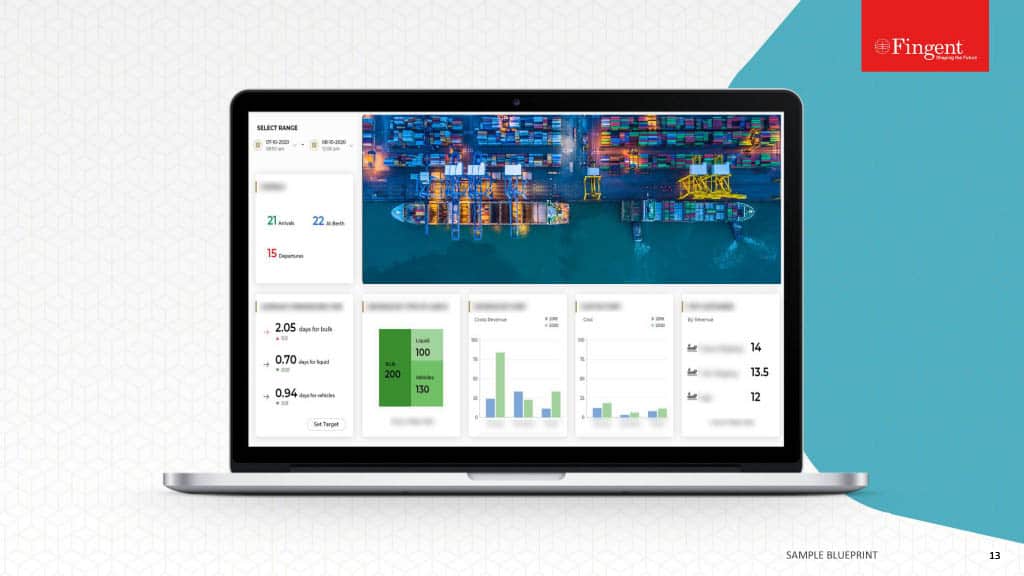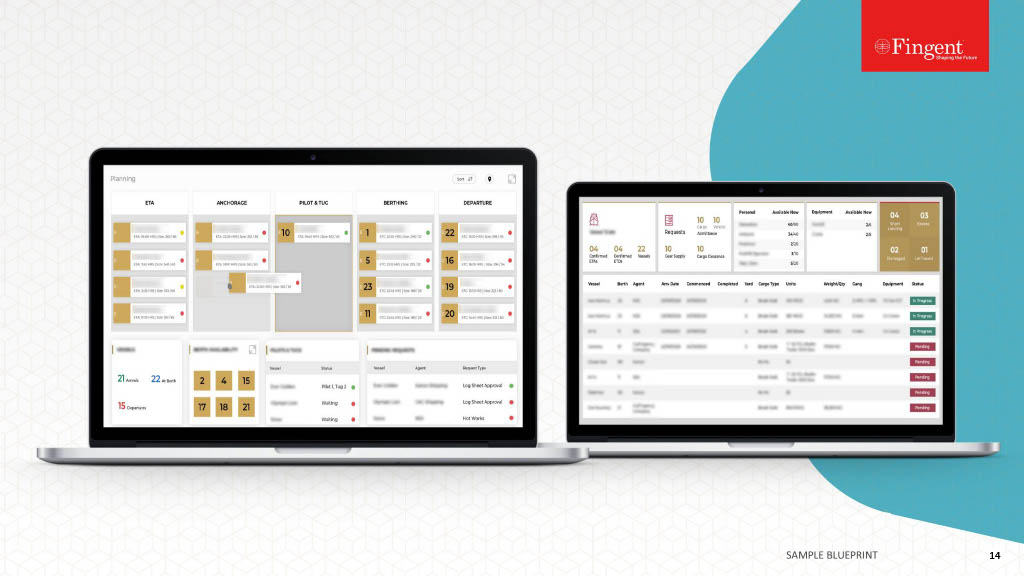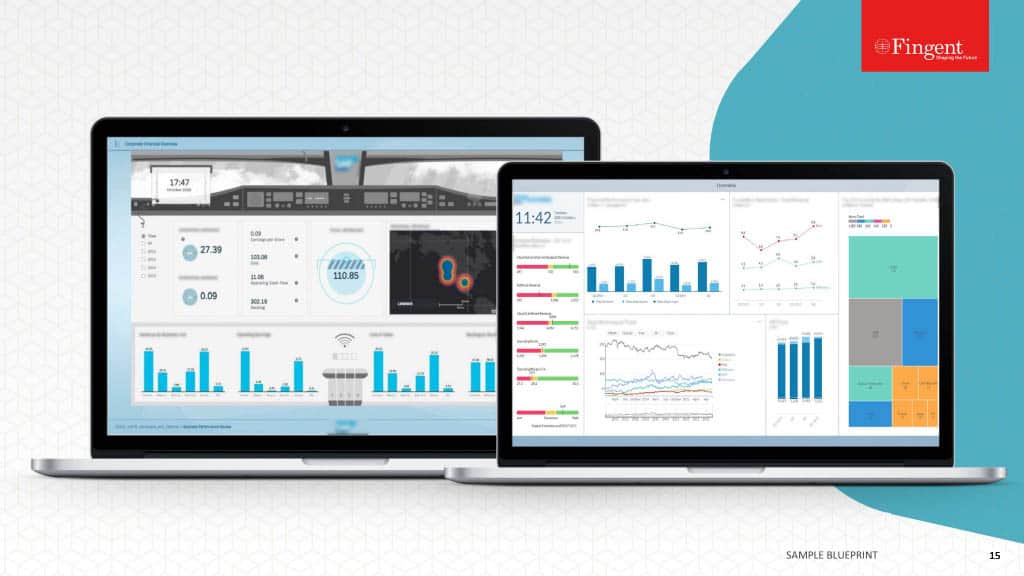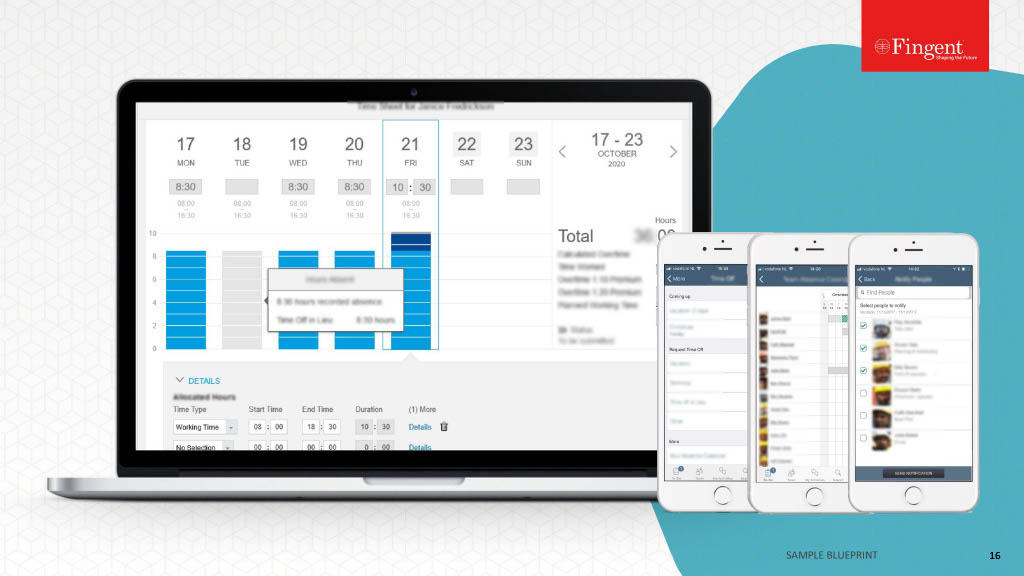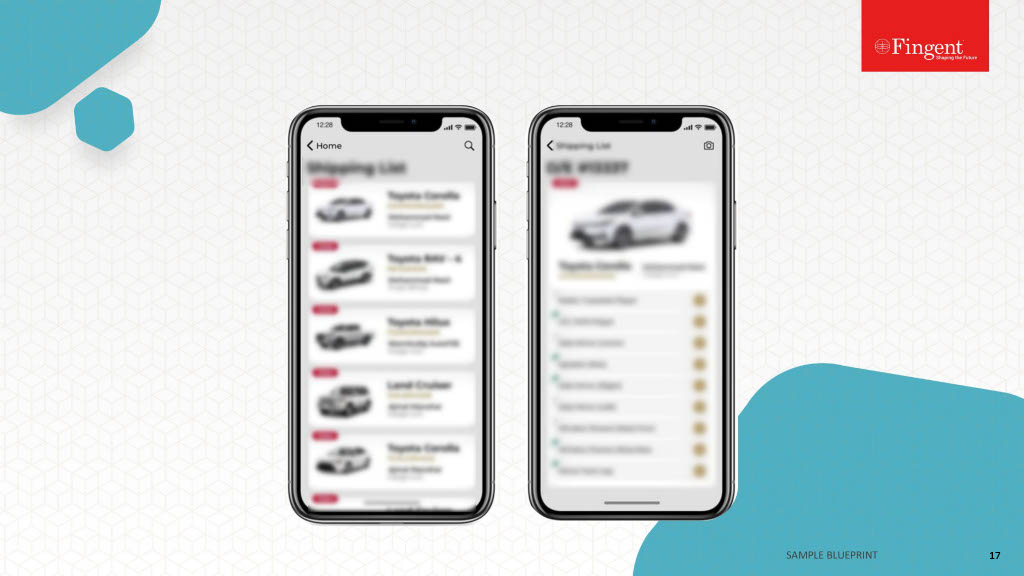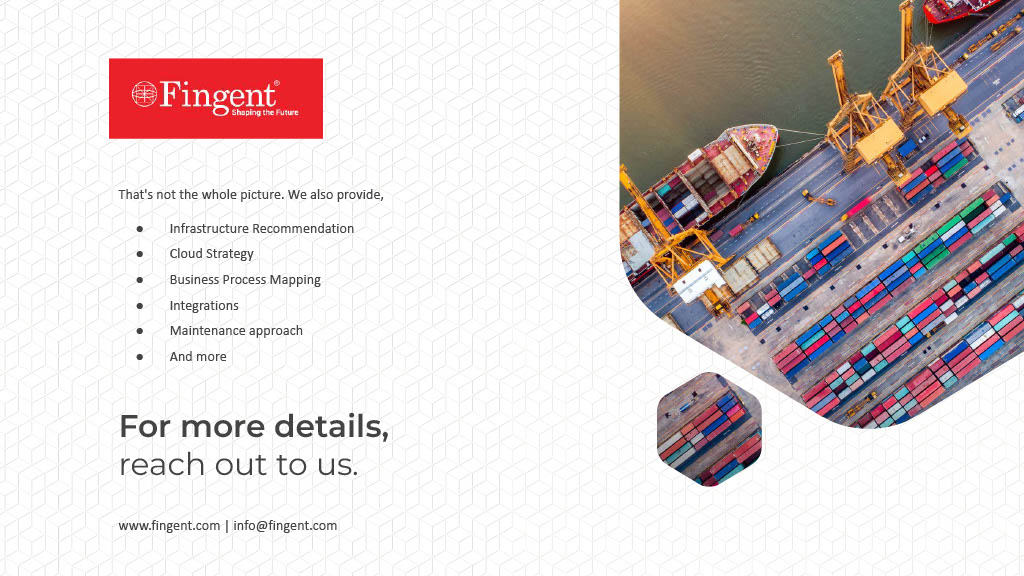Category: Digital Transformation
Stay up to date on what's new

Featured Blogs
Stay up to date on
what's new



Talk To Our Experts
SAP ATTP Enables COVID Vaccine Manufacturers to Overcome Supply Chain Vulnerabilities. Find How!
Vaccinating the whole world and making everyone resistant to COVID-19 is a daunting task. From managing product life cycles to supply chain tracking, and massive distribution, SAP Advanced Track and Trace for Pharmaceuticals (SAP ATTP) is helping the world’s leading vaccine manufacturers.
With regulatory requirements looming, meeting the target of delivering COVID vaccines to millions will require an efficient system that will eliminate any hiccups in the supply chain. Pharmaceutical companies must examine serialization and track and trace solutions to control the chain of custody to prevent tampering, counterfeiting, theft, and diversion.
Read more: 7 Practical Steps to be Implemented by Organizations that Engage in COVID-19 Vaccine Delivery
Thankfully, SAP ATTP (SAP Advanced Track and Trace for Pharmaceuticals) has emerged as a solution. It can enable your company to comply with serialization and associate reporting requirements. As SAP ATTP was co-developed with the leading pharmaceutical companies, it can be tailored to address the specific needs of your pharma company and your stakeholders. This blog will explain how SAP ATTP can quicken and smoothen the race to vaccinate the world. Let us begin by understanding what SAP ATTP is.
What is SAP ATTP?
As the name SAP Advanced Track and Trace for Pharmaceuticals suggests, SAP ATTP involves the journey of the vaccine from its source (the pharmaceutical company) to the destination (the end-user) within the supply chain. SAP ATTP enables companies to enforce specific measures to identify the product and view its journey to reduce counterfeit and stolen vaccines.
It addresses the regulatory requirements for serialization, tracking, and tracing of all pharmaceutical products, including COVID-19 vaccines. It is specifically designed to solve the issues with expected data volumes, queries, and reporting as per the guidelines. SAP ATTP is now playing a critical role in major pharmaceutical companies across the globe.
Leading COVID vaccine producers like Moderna, German vaccine manufacturer CureVac, AstraZeneca, and others are relying on SAP to manufacture and distribute vaccines on a global scale. According to SAP’s report, 18 of the world’s top 20 COVID vaccine producers run their entire product lifecycle and supply chain processes on SAP for better traceability, tracking, and serialization.
Read more: SAP for Business: 9 Ways to Maximize Business Performance
What is the significance of SAP ATTP?
If you have experienced a delay in delivering an urgently needed pharmaceutical product, you can understand the potential impact it can have on people and society. If the first challenge was to create and test vaccines at record speed, the next challenge is to vaccinate people across the globe before the virus mutates and becomes more virulent. This demand is stretching the supply chain to its limits. Digitizing their production to achieve production scale and flexibility is critical as most vaccine producers are data-heavy industries.
What are the advantages of using SAP ATTP software?
SAP ATTP is a solution that facilitates data exchange with packaging lines, supply chain partners and contract manufacturing organizations, and warehouse applications. Here are a few benefits of this software:
- Integrates serialization with business processes
- Enables compliance with directives across markets
- Reduces compliance costs for all serialization requirements
- Streamlines and manages a secure pharmaceutical supply chain
- Packaging line integration
- Boosts efficiency of your supply chain
- Enables simple reporting processes
How can SAP help win the race to vaccinate the world?
For perhaps the first time in history, pharmaceutical companies were pushed to focus all their resources on the development of vaccines in record time. And for the first time in history, they are expected to win the race to vaccinate the global population. This is an opportunity for intelligent enterprises to make a difference. SAP rose to assist by providing various solutions to address this pressing need.
1. Enables collaboration with supply chain partners
SAP helps pharmaceutical companies comply with international legislation, which focuses on ensuring genuine medicines reach patients and product authentication. SAP applications enable serial number management and regulatory reporting capabilities. Companies can use SAP to facilitate collaboration with supply chain partners, such as contract manufacturers and wholesalers. SAP cloud platform enables trading partners to exchange large amounts of serialization and associated data.
- Pharmaceutical companies must guard against product counterfeiting, reimbursement fraud, diversion, and medication errors.
- A company must include verification in case of the return of vaccine packs or an apparent tampering of the products.
- SAP’s digital network consists of a blockchain-based verification repository to eliminate such counterfeit products along the supply chain.
- Once manufacturers push data into the blockchain, wholesale distributors can execute verification requests. Since these solutions can be integrated into a pharmaceutical company’s backbone, your company enjoys a holistic view of its end-end processes.
Read more: 6 Tips for Logistics and Supply Chain Leaders to Plan COVID-19 Vaccine Distribution Strategies
2. Ensures patient safety and eliminates the risk of fake vaccines
Pharmaceutical thefts have cost billions of dollars worth of losses annually. One measure taken to overcome this challenge was to implement serialization. Serialization of pharmaceuticals protects the end-user and prevents manufacturers from producing fake goods.
SAP serialization allows you to provide a unique identifier (UID). It enables manufacturers to define regulations based on the laws of each country. For example, certain countries may require the entire product dose to be serialized, while others may require each unit to be serialized. SAP allows you to comply according to your country’s regulations. However, serialization is just the first step.
3. Helps you gain visibility of the vaccine from its source to destination
SAP ATTP allows for a transparent journey of vaccine from its source to the destination. Tracking involves knowing the current status, such as the current location of the shipment, in whose possession it is, and the condition of the vaccine, while Tracing involves knowing the past, such as where the vaccine has been, who had it, and was it handled appropriately.
SAP ATTP is beneficial to companies since the early stages of production and distribution. As it allows you to enter all the product details into the system, it is easy to locate where the product is at any given point in the supply chain. Furthermore, SAP can enable withdrawing a specific compromised batch instead of an entire shipment saving a considerable amount of money.
Pharmaceutical regulations vary from country to country. Nevertheless, all pharmaceutical products must be serialized for easy identification within the supply chain. Apart from this, certain governments may require companies to report data to regulatory bodies or authorities. They may also require verification of the products to ensure it is an authentic product. SAP can make these tasks more efficient as it allows you to:
- Generate and format serialized numbers
- Aggregate goods for quick and easy scanning of the vaccine units
Read more: How SAP Helps Realize Voice-enabled Warehouse Operations
Leave no loopholes in the vaccine supply chain
SAP ATTP helps pharmaceutical industries to gain real-time visibility into the location and condition of their product along the entire supply chain. In addition, it helps them perform better management by allowing real-time reporting and analysis to turn insights into actions fueling the mission to vaccinate the world.
As an SAP Silver Partner, Fingent top software development company, can help you implement SAP ATTP seamlessly and cost-effectively. Time is of the essence right now, and vaccine producers need to get the vaccine out faster while ensuring safety and compliance. So let’s save lives together. Connect with our SAP expert to see how you can benefit from implementing Advanced Track and Trace for pharmaceuticals.
Stay up to date on what's new

Featured Blogs
Stay up to date on
what's new



Talk To Our Experts
The Role of Chatbots in Boosting Brand Loyalty and Experience
As social messaging apps are gaining popularity, AI-powered chatbots are one of the best ways to reach out to a broader audience. Soon, several businesses across various verticals will implement AI chatbots that will help them carry out multiple tasks, including customer service and marketing activities.
According to Gartner, by 2021, over 50% of companies will spend more on developing chatbots (intelligent conversational assistants) against traditional mobile app development.
A chatbot is an AI-based program that communicates with humans through text messages or chats. It is a virtual assistant integrated into mobile applications, websites, or instant messengers and enables better engagement with your customers.
Read more: 5 Leading NLP Platforms that Support Chatbot Development
Two common types of chatbot
There are two types of chatbots a business can use: Transactional Chatbot and Conversational chatbot.
- Transactional Chatbot is pre-designed to provide a customer with a fixed set of choices. The customer can select an appropriate option, and the chatbot will then assist them through the whole process by providing more choices till their problem is solved. A transactional chatbot is an excellent choice for banks, online food delivery, restaurants, or businesses that are able to understand and pre-define the solutions/ products that their customers generally seek.
- Conversational Chatbot is designed to understand and respond to a conversation in a more human-like manner. It is equipped with artificial intelligence and has access to knowledge databases and other contextual information.
A conversational chatbot is more suited for businesses with advanced SaaS tools and B2B companies providing enterprise solutions and online social platforms.
Read more: How to Choose the Right Chatbot for Your Business
Five leading chatbot use cases in vogue today
1. Healthcare chatbots
Hospitals, clinics, and patient treatment centers leverage chatbots for booking appointments, sending medical information to refill prescriptions, answering common questions raised by patients or their attenders, checking physicians’ availability, and so on. According to Crunchbase, VCs have invested over 800 million dollars in at least 14 known start-ups like Safedrugbot, Sensely, Cancer Chatbot, and others to own a version of a chatbot with health features. The most significant advantage is that chatbots function silently 24/7 without disrupting anyone and answering questions at any time of the day.
Browsing through the website of a multispecialty hospital and sifting through the different specialties and doctors can be daunting. Chatbots reduce this strain and help patients book an appointment quickly based on their ailment or health condition. When a patient interacts with the chatbot, it will ask a series of questions to determine which doctor and department the patient should visit.
Example of a healthcare chatbot
Healthily is an AI-driven chatbot that allows you to input your symptoms and get an appropriate diagnosis. Its machine learning model allows the app to give near accurate or even accurate diagnoses.
Chatbots like Healthily prevent patients from waiting in long queues or relying on phone calls to consult doctors. With the ongoing pandemic, chatbots are making patients feel less anxious about seeking medical care. Chatbots help them get assistance in real-time.
2. HR chatbots
As the traditional office spaces give way to modern workspaces that are mobile, digital, or home, HR (PeopleOps) professionals face the increasing pressure to streamline communications and send instant responses to employees. Chatbots powered by AI free people from low value, tedious, repetitive, and transactional tasks to more high-value, strategic, engaging, and creative work. The inherent value extends to providing consistency and coherence to employee communication and reducing confusion for the end-user while delivering an instant response. HRs get more time to rethink the way they engage with employees and manage their entire cycle of work, including recruitment, onboarding, managing payroll and benefits, training and skills development, performance management, and so on.
Example of an HR chatbot
AskHR is an AI-powered HR chatbot that enables employees to get answers to the most frequently asked questions. AskHR bot natively supports 50+ languages and is hence a globally popular virtual assistant. It offers voice, email, and text support to employees and helps reduce costs, enhances employee engagement, and offers analytics to derive valuable insights.
Read more: Capitalizing on AI Chatbots Will Redefine Your Business: Here’s How
MUSA, Fingent’s AI virtual assistant
Multi Utility Assistant or MUSA is an AI-powered virtual assistant (a chatbot) integrated with Fingent Hub – Fingent’s internal employee management system. MUSA enables employees to get answers to common queries related to HR and IT DevOps processes at Fingent.
The virtual assistant helps our employees with questions related to their leaves, company policy, hardware or software issues, IT requests, and many more.
3. E-commerce chatbots
E-commerce chatbots guide customers in their purchase decisions.
Often, customers can get confused while browsing several products online. An E-commerce chatbot helps customers obtain detailed information about the product they are looking for or even helps them land on the right product page. Chatbots also help reduce cart abandonment as they can remind customers about the items left in their cart and prompt them to update their cart or purchase the items. Timely reminders and notifications will nudge the customers to revisit their carts and make a purchase decision, thereby helping businesses generate revenue quickly.
Example of an E-commerce chatbot
While launching its AirMax Day shoes, Nike increased its average CTR by 12.5 times and the conversions four times with the help of StyleBot- Nike’s chatbot.
Chatbots play an essential role in providing more reliable and quicker customer support and keeping the customers up-to-date about the delivery status of their purchases.
Read more: 5 Ways Chatbots Can Transform Your Real Estate Business
4. Chatbots in banking and finance
Chatbots are a great addition to any bank or finance institute that prioritizes customer service inclined towards digital interactions.
Chatbots can help users check their account balance, transfer money to other accounts, view the history of transactions, or even locate the closest ATM. In addition, banks are currently using chatbots for marketing activities such as sending customized information about a customer’s savings, investments, etc., and notifying customers about their new products and services.
Example of a BFSI chatbot
In 2018, Bank of America introduced Erica, their AI Chatbot. It helps customers conduct simple actions such as paying bills, receiving credit report updates, view e-statements, and seek financial advice. Recently, Erica’s capabilities have been updated to enable clients to make smarter financial decisions by providing them with personalized insights. Thanks to its budgeting capabilities, Erica users grew to 12.2 million in Q1 2020 compared to 10.3 million in Q4 2019.
5. Hospitality chatbots
The hospitality industry is hugely dependent on customer service, goodwill, reviews, and references. As travelers use multiple channels (website, social media, mobile travel apps, travel aggregator portals, etc.) to look for information, travel and hospitality service providers face stiff competition in disseminating updated content across all media. They need to be available round-the-clock in answering customers or helping with bookings. Chatbots help customers make bookings, gain more information about hotel services, travel packages, and inquire about offers and deals. From check-in to several concierge services such as booking restaurants to activity reservations, chatbots can seamlessly assist customers.
Example of a hospitality chatbot
Quicktext is a popular AI-powered chatbot for hotels that automatically handles 85% of guests in 24 languages and delivers instant response to customer requests across six different channels. In addition, it serves as a messaging hub where hospitality businesses can centrally manage Live Chat, WhatsApp, Facebook Messenger, WeChat, SMS, and Booking.com communications.
Read more: Hospitality Technology Trends: Revive The Lost Glory in 2021
How can chatbots help your business?
With the rise of emerging technologies such as artificial intelligence and wearable technology, chatbots provide industries with new avenues for businesses to engage with their customers.
1. Leverage messaging platforms
While social media engages audiences, messaging platforms enable businesses to have a one-on-one conversation with their customers. So, by integrating chatbots with your messaging platform, you could eliminate the need to build a new app and save time and money.
2. Customer service
Chatbots are a great way to augment customer service. The bots are available 24x7x365, which allows them to initiate the conversation proactively and prevent customers from waiting for long.
3. Customer engagement
Intelligent chatbots allow you to have more in-depth conversations at an individual level with your audiences, freeing them of any irrelevant information. So, a well-designed chatbot can extend the conversation and make the visitor come back for a discussion or a purchase. This can go a long way in establishing your brand loyalty.
4. Cost optimization
Getting a chatbot for your business is far cheaper and faster than developing a cross-function app or hiring additional employees. Chatbots do not need breaks, get tired, or make errors. Also, they can perform repetitive tasks without complaining.
Develop a custom chatbot for your business application
Chatbots are being widely used across different business functions and are augmenting customer experience. With advances in technology, bots will only get more competent and open new avenues to streamline customer communications.
We software development experts build bespoke and personalized chatbots leveraging AI and machine learning that enable your business to generate leads, increase revenue, and enhance user experience. If you are planning to develop a customized chatbot that can compete with the predefined bots in the market, contact us.
Stay up to date on what's new

Featured Blogs
Stay up to date on
what's new



Talk To Our Experts
A Comparison of Top 5 NLP Platforms: Select Your Chatbot Development Platform Wisely
The surge of artificial intelligence-based applications and conversational AI have heightened the use of NLP (Natural Language Processing). Each day, businesses collect an enormous amount of structured and unstructured data from their customers and users. Such information is collected through chatbots, intelligent assistants, and so on. Analyzing these data offers businesses insights into crucial operations and enhances their decision-making. However, manually inferring insights from tons of data is a challenging endeavor. This is where NLP platforms plays a vital role. This article will help you evaluate five different NLP platforms you can consider while developing a chatbot for your business support functions.
How Does NLP Platforms Help Businesses
Gartner and IDC report that more than 80% of the enterprise data generated today is unstructured. Natural Language Processing (NLP) technology helps us derive meaning from the vast labyrinth of online data. NLP refers to applying several computational techniques that enable us to do analysis and synthesis of natural language and speech. According to a report by Intrado GlobeNewswire, the NLP market is expected to be work USD 42.04 billion by 2026.
Chatbots are software applications that help us conduct conversations online via text or text-to-speech instead of directly communicating with a human agent.
Chatbots provide a better service experience to customers by responding to customer queries promptly, accurately, and most importantly, like humans. AI-powered chatbots can be trained to learn from data to respond in different and diverse scenarios.
However, picking the right chatbot platform can be a gigantic task. Here’s an analysis of five NLP platforms. Choose your chatbot development platform wisely.
Read more: Capitalizing on AI Chatbots Will Redefine Your Business: Here’s How
1. IBM Watson Assistant
A pioneer in the chatbot market, IBM’s Watson Assistant has evolved into a holistic customer care product. As the pandemic weighed heavily on businesses, customers and employee services were challenged in unimaginable ways. IBM Watson Assistant is designed to solve customer and employee challenges, so its relevance became even more significant during this time. Using IBM Watson Assistant to create your chatbot helps in the following ways:
First contact resolution
Resolving questions quickly and successfully is one of the biggest priorities of Watson Assistant. One of the critical challenges of first contact is user engagement. If that is your concern, here is how Watson contact can help:
- Allows integration with the phone, SMS, and WhatsApp: As it can integrate with phone and SMS, you can deploy speech services with natural sounding voices created with the help of advanced AI.
- Best intent recognition accuracy: Watson Assistant helps you understand your customers’ questions without always requesting them to rephrase the question.
Open ecosystem
Watson Assistant is designed as an open ecosystem. It, therefore, allows you to connect with your existing tools, systems, and applications. Besides, it gives you the ability to orchestrate the end-to-end experience.
Scale your assistant to increase complex use cases
Watson Assistant allows you to scale your virtual assistant beyond simplistic FAQ bots. It can be customized easily to fit the specific needs of your business.
Use cases: Companies such as Botanalytics, Ebix, and SnapEngage use Watson Assistant.
2. Amazon Lex
Amazon Lex allows you to create and embed engaging chatbots into your applications, shielding you from the complexities of NLU (Natural Language Understanding) and speech recognition. Here are some of the top features of Amazon Lex.
Quicker integration
The capabilities of Amazon Lex are simple and easy to use, allowing you to scale up from ground zero to a fully operational chatbot within a matter of minutes. Using a combination of aliases and versioning, you can roll out your conversational interfaces into multiple environments.
Cost-effective solution
Amazon Lex has no upfront costs. You can pay-as-you-go.
Fully managed service
It provides all the necessary features to build, deploy, scale, and monitor your chatbot.
Business use cases
- Commerce chatbot: Allows you to order food
- Support chatbot: Provides automated customer support
- Enterprise chatbot: This allows you to connect to enterprise data resources
- Use cases of Companies: Lumeneo.com, Paralect, and CommonBond use Amazon Lex.
3. Rasa
Rasa platform is an open-source framework. It is leading in ML toolkits that help developers create better chatbots with minimal training data. The two major components of the Rasa stack are Rasa NLU and Rasa Core. Rasa core helps create intelligent, conversational chatbots.
It is best for businesses that are looking to increase subscriber engagement and for those who are interested in marketing automation and personalization.
The benefits of Rasa are:
- You can deploy into your own server by keeping the components in-house
- Highly customizable
- Allows for multiple environments necessary for development, staging, and production
- It helps you send individualized newsletters to each of your subscribers
- It continues to self-learn when it interacts with people
- It allows you to understand your customers better
- It can be integrated with Facebook Messenger, Twilio, Telegram, and more
4. SpaCy
Spacy is an open-source NLP library that is designed for production usage. It helps you build real-world projects and handle large amounts of text data. It is a one-stop operation for most heavy-hitting functions for NLP.
It is best for companies that are bootstrapping a vast production or for vendors in charge of enterprise solutions. It has proven highly useful for companies that require industry-level solutions and need enhanced language support.
Some of the benefits of SpaCy are:
- It easily allows deep data mining
- It does not weigh down the user with obscure formulas
- It can analyze text quicker than its competitors
- Enables businesses to implement strategies to interact with customers and leads
- It is capable of working with over twenty languages
- Allows you to handle NLP solutions across an international suite of languages.
- It is a powerhouse for every deep learning algorithm with the tools you need to teach your programs human language.
5. Microsoft Azure
Microsoft Azure bot service helps you develop, deploy and host a chatbot in an uncomplicated manner. It is a managed bot-building platform with an integrated environment. It is purpose-built for bot development.
Microsoft Azure bot services are best for enterprises and IT companies.
- It helps run FQAs speedily and consistently reducing customer management issues
- Easy to integrate with various Azure services
- You can build, connect, test, deploy and manage intelligent bots from one place
- Easy to integrate with other chatbot software such as Jabber or Skype
Read more: How to Choose the Right Chatbot for Your Business
Why choose Fingent as your chatbot development partner?
Acquire estimates that nearly 1.4 billion people are willing to talk to chatbots. Did you know that chatbots can handle 80% of routine customer questions? These figures prove that the chatbot platform is the present and future of your business.
However, it is important to choose a chatbot development partner carefully. We at Fingent software development experts ensure your chatbot platform is easy-to-use even for non-tech employees. A customized and fine-tuned chatbot frees people up from low value, boring, repetitive, and transactional tasks. It enables your employees to focus on high-value, strategic, engaging, and creative work. The business value also lies in that the chatbot provides consistency and coherence to your communication, reduces/ eliminates confusion for the end-user while giving an instant response. It helps your employees get things done fast as they need not worry about the low value, boring, repetitive, and transactional tasks. Thanks to chatbot development!
We will work with you through all the stages, from requirements identification, technology selection to planning and implementation. We will continue to support you in managing the chatbot after deployment. While you zero down on the chatbot platform, choosing the right partner to help you develop the chatbot according to your specific requirements is essential. Give us a call, and let us get talking.
Stay up to date on what's new

Featured Blogs
Stay up to date on
what's new



Talk To Our Experts
How Retail Software Solutions Help You Gain A Competitive Advantage
The retail industry has witnessed a tremendous transformation over the past few years. Innovative retail technologies have made the sector fast-paced and highly competitive. The advent of cloud technology has also disrupted the retail industry from the ground up. These technology changes accelerate the need for advanced and bespoke retail software solutions that can effectively automate most routine store operations.
Why should you adopt custom retail software solutions?
Fingent helps you develop custom retail software solutions that help you:
- Automate everyday retail store operations,
- Switch to e-commerce quickly,
- Enhance inventory management,
- Streamline payments and invoices tracking,
- Improve order fulfillment, and
- Serve your customers better and faster.
Read more: Custom Software Development is the Ideal Way to Build Business Apps in 2021
As several countries continue with lockdown measures, the digital shopping trend and the shift in consumer behavior are here to stay. Retailers are forced to address the rising consumer expectations with limited resources like transport restrictions, shortage of labor, out-of-stock scenarios, and so on. Contactless shopping has found a better place in today’s business landscape, and retailers need to adopt personalized retail software solutions to stay relevant and competent in the market.
A few stats that underscore the significance of custom retail software solutions
The following figures suggest why brick-and-mortar stores must adopt retail software solutions and digital transformation to stay ahead of competitors and attract loyal clients.
- 30% of consumers do not wait for more than two minutes to determine if the product they want to buy is in stock.
- 78% of the customers would not use a retailer again after three late or incomplete deliveries.
- 87% of buyers leave the store if the product they are looking for is unavailable and there is no assistant nearby.
Read more: Digital Transformation in Retail: Why it Matters?
Our custom retail software solutions are perfect for companies of different sizes. We help you build and integrate software tailored to your retail business. We create personalized retail software solutions that are scalable and meet the growing needs of a single shop or even a vast retail chain consisting of several Points of Sale (POS).
Benefits of custom retail software solutions
The most significant features and capabilities of retail software solutions include:
- Managing orders, products, and inventory,
- Handling financial transactions,
- Streamlining the supply chain,
- Helping human resources and marketing campaigns, and
- Managing customer relations.
Here are the benefits of custom retail software solutions.
1. Offers real-time visibility
Retail software solutions allow you to control warehouses and shop floors in online mode and identify if certain products are in or out of stock. Also, it helps you send instant alerts if something is out of order and thus avoid lengthy downtimes.
2. Automates in-store processes
Retail software solutions help automate all major store tasks such as billing, price regulation, inventory auditing, reporting, payroll records, returns processing, and more.
3. Improves customer service
As retail software solutions help automate most store processes, your employees can spend more time engaging with the customers and promoting your new products and latest arrivals. Customer reps will have the historical data in hand while attending a customer service call. This helps them save time, effort, and money, reduce returns and refunds, and direct customers to the optimal solution. Embedded analytics in the software allows your marketing team to send personalized recommendations to your customers based on their shopping history and online behavior.
Read more: A Comprehensive Guide on Developing Custom Accounting Software for Business
Different types of retail software solutions
1. Point of Sales (POS) software
The software for shop management, implemented in brick-and-mortar stores, facilitates seamless transactions between customers and the store on the spot. The POS market is projected to grow at an annual rate of 14% from 2016 to 2024. Fingent helps you develop custom Point of Sales software that enables you to manage sales, inventory, and employees with ease. We build custom POS software for your single store or a retail network. It helps boost your customer engagement and revenue.
2. Inventory management software
We help you develop custom inventory management software for tracking, managing, and organizing product sales, material purchases, and other production processes. Typically, the inventory management software works with wireless tracking, barcodes, and radio-frequency identification to support inventory tracking and control.
3. Payment processing software
Payment processing software is a secure program that connects eCommerce sites via virtual terminals to other payment systems that acknowledge credit cards and other online payment methods. Payment processing software allows users to add their card or bank details and notifies financial institutions that approve or reject payments. We help integrate payment processing software into your retail software solutions.
4. Retail ERP systems
Enterprise resource planning (ERP) systems integrate modules for controlling all stages of business. An ERP system is a perfect software for shop management. ERPs are customizable and support integration with third-party systems. ERPs like Odoo and SAP allow developing specific modules to suit your business needs. For instance, SAP FICO (Finance and Cost controlling module in SAP) and SAP Ariba (sourcing, procurement, and financial supply chain solutions).
Read more: How SAP Solutions Allow Retailers to Stay Competitive in 2021
We are an Official Partner of Odoo as well as a Silver Partner of SAP. We are well placed to offer the best ERP consulting, implementation, and maintenance services for your business across these two platforms.
Read more: How Odoo ERP Enhances Retail Operations Management
5. e-Commerce software
The COVID-19 pandemic has increased the adoption of eCommerce among retailers. That said, retail software platforms are a must today. The software enables online store owners to add and remove products, process payments, fulfill orders, etc. Fingent helps leverage numerous eCommerce development frameworks such as Magento, Odoo, etc., to build B2B and B2C e-commerce software for your business.
Read more: 5 Reasons to Integrate Your E-commerce Application with Odoo ERP
You can deploy retail software solutions either in the cloud or on-premise according to your specific requirements:
- On-premise retail software solutions: An on-premise retail application is installed on your local computers or local servers. However, you may need the expertise of an IT specialist like Fingent to maintain the system and handle updates or fix issues.
- Cloud-based retail software solutions: Cloud-based retail software solutions do not require to be installed on your hardware. If you have a stable and reliable internet connection, you can deploy the retail software as a SaaS solution, which is managed by the providers automatically.
Steps to create custom retail software for your business
1. Choose the right vendor
Selecting the right software provider is crucial as well as challenging. Your choice will determine how positively a future system will impact your business performance.
2. Plan and budget
Create a detailed plan and discuss the key features your system should include. Whether to have an omnichannel solution, what function it should perform, what third-party system it needs to be integrated with, and the software development budget must be considered. You can opt for custom software development. At Fingent, we provide you with out-of-the-box retail software solutions within your budget.
3. Development and implementation
Here are a few best practices to take advantage of custom software development:
- Include an internal team of specialists having the needed expertise and experience to participate in the implementation process.
- Provide your team with adequate training to get started and explain the benefits. Your offshore software development partner can help you with this. At Fingent, we help ease your transition to custom software. We offer training and support and provide post-release maintenance and support to our customers.
- Eliminate inactive accounts and other documents that have not been processed for years to simplify the migration.
4. Testing
The retail software system implementation requires continuous control and testing. Thus, most companies rely on continuous testing to ensure the process will happen simultaneously with the integration.
Additionally, you must be prepared to address several issues. The primary purpose of the final testing is to simulate the lifecycle of your business with go-live processes. Fingent has a dedicated Quality Assurance & Testing team that ensures your application is bug-free, high-performing, and responsive.
5. Maintenance
After successfully implementing the custom retail software system, it needs support and maintenance that must be provided either by your technical experts or the software provider. As said above, Fingent offers post-launch maintenance support and change enhancement services for the custom software we develop.
With extensive experience in retail software development and eCommerce systems, we can become your reliable partner and make your company a front-runner in the retail industry.
If you are looking for custom software for shop management or tailored retail software solutions, please drop us a message.
Stay up to date on what's new

Featured Blogs
Stay up to date on
what's new



Talk To Our Experts
How Cloud ERP and ERP Systems Support The Manufacturing Industry?
The manufacturing industry has always been highly dynamic and competitive. However, the COVID-19 pandemic and the extension of lockdown restrictions weigh down on manufacturing companies across the globe, causing many to lose momentum. At the same time, customers who are always on-marketplace are expecting high-quality, individualized products delivered within shorter timeframes. To meet these requirements, manufacturers must synchronize their demand chain with the supply chain. The appeal of ERP systems (enterprise resource planning systems) for manufacturing in this scenario is evident. Here’s everything you need to know about ERP systems for manufacturing.
What is the importance of ERP systems for manufacturing?
ERP systems for manufacturing enable manufacturers to compile and maintain their business in an easy-to-scale model. According to G2 (a leading tech marketplace), 47% of ERP users belong to the manufacturing sector, and nearly 50% of companies are keen on acquiring or upgrading their ERP systems.
Fortune Business Insights reports that the global ERP software market size is estimated to reach USD 71.63 billion by 2026, at a CAGR of 8.5% during the forecast period (2019-2026). ERP systems for manufacturing encompass every function and streamline every business operation.
Though automation is not a new concept, the convergence of the digital world with the physical world has transformed the supply chain. In manufacturing, AI can be used to increase uptime and ensure consistent quality. AI and analytics aid in better forecasting, which in turn means better business and better returns.
Read more: Top 10 Technologies That Will Transform Manufacturing in 2021
Here are six reasons that emphasize the importance of ERP systems for manufacturing.
1. Reduces forecast anxiety
Most businesses worry about the next quarter. ERP systems for manufacturing help generate forecasts and sales reports based on historical transactions. This increases the accuracy and dependability of production and keeps stock levels in line with the increase and decrease in demand.
ERP systems can combine data, statistical algorithms, and predictive analytics to help businesses identify future outcomes based on the past. Predictive analytics can help you determine customer responses, forecast inventory, and even detect fraud. Improved supply chain visibility will help you set the level of preparedness required on the supply side to match demand. It can help you anticipate customer demand and stock goods to fulfill the orders.
Read more: 5 Reasons to Integrate Your E-commerce Application with Odoo ERP
2. Increased mobility and employee efficiency
With the lockdown measures tightening, working from home can be challenging for businesses. When the pandemic threw a curveball at companies, ERP systems for manufacturing have handed them a new strategy by enabling employees to work remotely and access all the relevant information they need from a single portal. They can access data through their laptops and computers and even from their phones and tablets, no matter where they are.
3. Flexibility
As each wave of the pandemic takes the world by surprise, manufacturing industries must ensure they are flexible to respond quickly to changing market trends. Such flexibility enables a business to be collaborative in meeting demands and promoting increased revenue and efficiency.
4. Increased profitability
Are you focusing on increased revenue in the next few months? As you are already aware, getting more work done at a lower cost automatically improves profits and encourages growth. ERP enables manufacturers to be alert to changes and react quickly to variations in raw material costs and delivery timeframes.
Cloud-based databases enable business leaders to process information quickly and equip them to make high-quality decisions rapidly. ERP systems for manufacturing increase organizational efficiency, eliminate unprofitable areas and cut down on waste. Moreover, ERP software dramatically reduces control and inventory management expenses.
Read more: How Organizations can Gain a Competitive Edge by Implementing Digital Core ERP
5. Enhanced security
Advancement in technology has made data available at our fingertips. Unfortunately, it has also made it readily available for hackers and criminals. The significance of data privacy and confidentiality has prompted most countries to have data protection laws in place, and compliance with those laws is non-negotiable. ERP systems for manufacturing have various features that enable your business to protect personal information. ERP system allows you to code your data and secure it by restricting the data through identity and access management.
6. Customer service
Every business must be concerned about customer acquisition and retention. ERP systems for manufacturing allow you to centralize and streamline your client information. This will help your sales team focus on building and maintaining customer relationships. End-to-end tracking and insights offered by ERP will help you provide better customer interaction. Since ERP supports e-commerce integration, businesses can handle web-based order processing and client interactions.
Read more: How Odoo ERP Simplifies Sales Management in Your Organization
Cloud ERP for manufacturing
Fear of misstep may prevent businesses from moving to the cloud, but outcomes prove that cloud-driven ERP is far more beneficial when compared to manual methods. Here are some benefits of cloud ERP:
- As each department has its own requirement, a customized ERP solution caters to operational and departmental needs.
- Cloud ERP allows your employees to access their data on the go. This aspect has been very crucial given the unprecedented circumstances brought in by the pandemic.
- Real-time data and reporting help in determining the future of your business and accelerates your decision-making process.
Read more: Top 6 Reasons Why You Should Move to a Cloud-Hosted ERP
Tried and tested ERP systems for manufacturing in 2021
Functionalities of ERP systems for manufacturing help organizations minimize production lead times and increase automation. Here are three tried and tested top ERP systems for 2021:
1. Odoo ERP system
Odoo manufacturing ERP software allows you to handle complex production workflows, product planning, order and inventory management, schedule management, warehouse management, bills of materials, purchase, PLM, maintenance, and quality.
Odoo ERP for manufacturing allows you to:
- Create a manufacturing order
- Configure work center
- Configure routing
- Configure bill of material
- Create scrap
- Product life cycle management
- Preventive and corrective maintenance management
As an Official Partner of Odoo, Fingent is primed to provide the best Odoo ERP consulting, implementation, and maintenance services for your business.
Read more: Why Choose Fingent as Your Odoo ERP Partner
2. SAP ERP system
SAP manufacturing software and Industrial Internet of Things (IIoT) solutions enable manufacturing companies to accelerate time to market, gain new production efficiencies and lower costs.
SAP offers a wide range of software solutions for manufacturing companies, such as SAP S/4HANA Manufacturing solutions, SAP Manufacturing Execution, SAP Manufacturing Integration and Intelligence, SAP Digital Manufacturing Cloud, SAP Environment, Health and Safety Management, and so on.
SAP ERP system helps in two specific categories:
Manage inventory and bills of material:
- Handle bills of material and multi-level bills of materials
- Record, track and produce serial numbers for incoming and outgoing products
- Manage multiple units of measure
Manage the production process:
- Generate both assembly and disassembly work order
- Maintain records
- Generate finished goods.
Read more: https://testingweb.fingent.net/sap-erp-central-component-sap-ecc/
SAP ERP software offers digital manufacturing solutions to meet the demands in a challenging market. SAP’s solutions for the manufacturing industry include Digital Manufacturing Cloud solutions, Manufacturing Execution System (MES), Production planning & scheduling, and IIoT. Being an SAP Silver Partner, we help businesses leverage the full potential of their SAP ERP software.
Read more: SAP Business One vs. SAP Business ByDesign: Helping Businesses Pick the Best
3. MS Dynamics ERP system
Microsoft Dynamics 365 ERP system offers a holistic package of solutions for manufacturing companies that include ERP, CRM, BI, Analytics, and a horde of top-notch applications. You can easily manage your assets, supply chain operations, production and purchase orders, supply chain planning, bills of materials, and a wide variety of applications that enhance your business performance from the shop floor to the last-mile delivery.
Tools of MS dynamics can help you:
- Control financial management
- Deliver better customer service
- Collaborate across your virtual organization
Read more: ERP Software Selection: 5 Step Checklist for CFOs
Over to you
Manufacturing is the economy’s backbone. ERP is an excellent tool that gathers all information from every corner of the business and translates it into financial data and other valuable insights that help companies make strategic decisions in 2021. The potential of totally streamlined business functions makes the benefits of implementing ERP systems for manufacturing a worthwhile investment.
Over the past 17 years, we have been helping businesses solve challenges through technology. Unlock your business value with custom ERP solutions or ERP implementation, migration, upgrade and support. Give us a call!
Stay up to date on what's new

Featured Blogs
Stay up to date on
what's new



Talk To Our Experts
How Organizations Can Embrace Transformation and Expedite Their Growth
From remote working and e-learning to sales and customer service to more critical cloud infrastructure and security, the COVID-19 pandemic has accelerated technology adoption across several key domains. The pandemic has made digital transformation crucial for business growth across various industries. Satya Nadella, the CEO of Microsoft, puts it that “We’ve seen two years’ worth of digital transformation in two months.”
That said, companies will have to change their mindsets and adopt new strategies to stay relevant and competitive in future. Here are six ways you can adapt to the new normal and taste business success.
Read more: How Business Owners and Leaders Can Set up a Successful COVID Exit Strategy
1. Adapt to change
Change is the only constant and more so today than ever before. Change is happening at a faster pace and is very crucial for small businesses. Today, old and traditional methods of winning clients and serving them do not seem to fit. The list of things you need to change may be long and only growing. Instead of reacting to these changes, the best approach is to embrace them and treat them.
So, when you treat the problem, you employ change to work with you and not against you. People are more likely to accept strategic changes now, especially if the initiatives are focused on improving their lives.
Bring agility and innovation to your business by implementing a quarterly strategic planning and review process. It will allow you to remain focused, actionable, and agile by adopting new learnings.
While you are in the process of adapting to changes, consider a few questions that you need to ask yourself.
- What can disrupt my business and change everything?
- How can I lead that change?
- How can I ensure that my business stays relevant and profitable in the next five years?
Read more: Top 5 Organizational Imperatives for Business Leaders to Become Winners in the New Normal
2. Customer always comes first
As consumer needs keep evolving, you have to think of ways to meet the new supply and demand to stay relevant and competitive.
Social distancing due to the pandemic has left many businesses struggling—for instance, physical retail stores, manufacturers, automotive, banks, etc. Many product-based companies face significant issues related to manufacturing and distribution. Service-based companies are also suffering due to poor customer demands. In short, business models should be revamped so that they are immune to new challenges.
The pandemic has even changed customers’ needs and preferences.
One of the best ways is to engage in a conversation with your clients to identify opportunities. You could probably start by asking a probing question at the end of the conversation with your client. You may also conduct surveys or quarterly client advisory groups to follow a more formal process.
To stay relevant, you will have to prioritize customers’ needs and problems. It is imperative for future growth and innovation.
View Infographic: Business technologies to boost customer experience and satisfaction
3. Implement automation wherever possible
Working smarter means hiring and collaborating with the right talent. Encourage teamwork for removing the bottlenecks and hurdles. It will translate to more revenue with the available resources. Effective workplace collaboration will also boost your team’s morale and reduce lay-offs.
Leverage technology and systems to streamline your business and allow it to run smoothly. According to Gartner, by 2024, businesses will see a 30% reduction in their operational costs by combining hyper-automation technologies with redesigned operational processes.
Identify processes that can be automated and evaluate how automation will enhance your customer service and experience.
Read more: What Makes a Business Process Apt for Automation
Automation of repetitive, routine, and mundane tasks saves your workforce’s productive hours and spares them for more crucial tasks. Automation enhances your organizational efficiency and offsets growth investment.
4. Speed is the key to sustain in 2021
The pandemic has made companies rethink their conventional organizational models and pushed them to adopt new ways of working at speed. Flat structures empowering decision-making are replacing the traditional management-led hierarchies. It enables companies to perform with improved speed and precision. For instance, PepsiCo adopted newer working models to enable fast and easy access to their products during the pandemic. Within 30 days (from concept to execution), the company launched two direct-to-consumer (D2C) websites.
5. Adopt digital commerce
The pandemic has spurred digital commerce like never before. Deloitte’s 2020 holiday retail survey reports that contactless shopping experiences enjoyed a huge spike in demand during the holiday season last year. Over 73% of shoppers planned to have orders delivered to their doorsteps as against 62% in 2019.
Read More: Contactless Retail Delivery Software – How Retailers Can Revive Sales While Adhering To Social Distancing Norms
Companies should accelerate and optimize both B2B and B2C digital commerce channels by developing custom retail software solutions to enjoy the benefits of e-commerce sales and ROI.
As customers demand efficiency and speed, organizations must give precedence to customer experience to overcome competition.
In 2020, Adidas established itself as a top digital commerce player targeting $4.9 billion in online sales, almost 12% of their overall business. In the future, the company expects it to rise to 25%. Also, they were quick to recover from the pandemic impact with an increase in online sales during the lockdown.
Read more: 5 Transformative Trends Ushered by B2B E-commerce in Healthcare and Life Sciences
Fingent leverages innovative and emerging technologies to help digital retailers and e-commerce businesses
Fingent custom software development experts helps retailers build custom retail software solutions, e-commerce, and mobile commerce apps that help you deliver exceptional customer service and experience, just like your physical retail store. Fingent helps retailers and e-commerce brands develop Augmented Reality-based solutions that allow their customers to preview objects in 3D. Using AR technology, both online shoppers and in-store buyers can choose their preferred products without the hassle of buying the wrong ones. We enable companies with an e-commerce presence to build AR applications through web platforms (WEB AR), avoiding the need for separate mobile apps.
Read more: Technology Investments: How to gain maximum value?
6. Ensure customer data privacy and protection
Data transparency is imperative. With the rise in going digital, the total amount of data created, captured, and consumed will more than double by 2024 globally. A 2019 Factual survey reveals that more than 50% of the US smartphone users will be ready to share their geolocation details with a service provider only if they are aware of how the information will be used. When customers realize the benefits of sharing personal data, such as online behavior, shopping history, mobile app usage, or geolocation tracking and trust that their data will be protected, they will be more willing to share it.
Jersey Mike’s Subs, a US sandwich chain, has a transparent privacy policy that lets you know which customer data they collect and how it is stored and used. Approaches like these that give consumers clarity and control over their personal information will define personalization and enhance customer experience.
Consumer data privacy acts such as General Data Protection Regulation (GDPR) for the European Union (EU) and European Economic Area (EEA) and the California Consumer Privacy Act (CCPA) aim at ensuring consumer privacy rights and data protection under the respective regional, state, and federal laws. These acts allow consumers in the respective regions to see all the information companies have saved on them and how the data will be protected and used.
We help ensure smooth business transformation
As we try to recover from the crisis, it is essential to consider what the future looks like for your business. Your organization must adopt new technologies, innovation, and new practices to ensure a smooth business transition. It also helps you meet the growing customer demands.
Reach out to us and let us help you accomplish a seamless business transition through modern technology adoption.
Stay up to date on what's new

Featured Blogs
Stay up to date on
what's new



Talk To Our Experts
Reduce your operational costs and unnecessary investments with legacy modernization
Since the pandemic started tightening its grip on the world, businesses have seen an unmistakable acceleration in digital transformation. Legacy application modernization enables enterprises to have the agility and ability to respond to dynamic changes. Software technologies are being enhanced and deployed at an unprecedented scale, and most businesses have noted a high appetite for digital transformation.
Read more: A Detailed Guide to Understanding Digital Business Transformation
Your business should also have an application modernization strategy to ensure business continuity and growth in a highly volatile market. Modernizing your existing applications or systems is the best way to monetize the current capital and avoid unwanted technology investments.
Legacy application modernization helps you get rid of accumulating technical debts and business paralysis. This blog discusses how application modernization enables businesses to transform digitally and scale up during the pandemic.
What is application modernization?
Application modernization involves updating older software for new computing approaches. These updates include new languages, frameworks, and infrastructure platforms. We can compare this update to renovating an older home, enabling it with better safety, structural integrity, ease of use, design, and so forth. This practice is also called legacy modernization. Legacy modernization extends the lifespan of your applications instead of replacing them wholly. Such an approach will allow your business to take advantage of technology innovations.
Most businesses have thoughtfully invested in their existing application portfolio. Some companies are ready to retire these applications and adopt the latest. However, this can be costly from both a financial and operational standpoint. Hence, “application modernization is the most sensible way to leverage newer platforms, tools, and frameworks.”
Read more: Why modernize your legacy systems? What’s the best approach to legacy systems modernization?
5 ways application modernization enables businesses to scale up during the pandemic
Owning and operating outdated software can present a variety of challenges during the pandemic. Outdated software can accumulate problems over time, resulting in employee and customer frustration. Here’s how application modernization helps businesses scale up during the pandemic.
Read more: Six Common Enterprise Software Development Myths Debunked
1. Application Modernization reduces costs
Because of diminishing resources during the pandemic, “cost“ has been the most important driving factor for application modernization. For example, the more data you accumulate, the more you have to pay for the on-premise data center forcing companies to buy new storage systems more frequently.
It is expensive to own and maintain the infrastructure as they incur extra costs for cooling, space, and electricity. Apart from these expenses, you would need a dedicated IT team to maintain a vast storage system. Therefore, it is reasonable and beneficial to invest in timely application modernization that helps avoid all the costs mentioned above.
Read more: Four Ways to Future-Proof Legacy Applications
2. Enhances customer experience
With stiff competition, the market has turned into a battleground for businesses that sell similar products and services. In this scenario, customer experience is what will set a company apart. Continued use of an outdated system can hurt your customer experience because they have limited functionality. Legacy software affects efficiency and waiting time. Additionally, the security problems of legacy software can easily compromise your business and customer data, impacting your brand severely.
On the other hand, a customer expects your business to keep up with the latest trends and technology. Application modernization can enhance your customers’ experience by transforming the end-user interface, automating manual processes, and creating new features. Essentially, your business operations will be more efficient with more stable systems, quicker fixes, and better security. All of it together sets your business apart, ensuring your business thrives during the pandemic.
3. Enables you to create new features and services
You may have invested in software that is perfect for your current needs. However, the pandemic has taught us that change is inevitable. An application that is working well today may not perform so tomorrow. Every new patch, release, or update that is not purpose-built will be a problem for you. It is challenging to meet the changing customer needs during an economic downturn.
Thankfully, application modernization allows your business to create new features and services that align with your current and future goals. These new features and services can be purpose-built for your business to ensure the legacy application continues to provide value today and into the future.
4. Improves employee productivity
You cannot expect your employee to work with applications and systems that seem to take forever to respond or perform simple operations. Just as businesses expect efficiency from their employees, employees expect their companies to provide high-performance technologies in their offices.
Working on outdated applications can frustrate your employees, lowering their performance and hindering their success. Legacy and low-performing software can increase work stress resulting in missed deadlines. It can also affect overall productivity as it irritates and demotivates your workforce.
Application modernization can automate several repetitive tasks and processes, freeing up your employees to concentrate on more intelligent tasks. It will save time and increase the efficiency of your employees. Since modernization minimizes application problems, it allows you to develop more features designed to streamline your operations.
Watch video: New Technologies for Workforce Management and Optimization
5. Erases technical debts
Technical debt creates friction between developers and their work. It may increase their job tomorrow, as the situation demands them to take the fastest and shortest approach to deliver the project today. Technical debt includes the implied cost of additional rework that developers have to bear for taking a shortcut today. It is translated into incremental cost and loss of agility because of prior decisions intended to save time or cost. Moreover, technical debt can build up to a point where developers will not be able to do anything to rectify it. Technical debt can result in increased maintenance costs and the inability to add new features. Since each part depends on the other, any attempt to fix one part might cause some damage to another.
Application modernization can erase technical debt because it eliminates the need to replace your existing systems completely. Thus, your company need not spend resources to maintain an outdated code. It will also reduce overall problems from technical debt. Legacy software modernization fixes your application’s glitches and makes it more robust and healthy.
Modernize your apps without burning a hole in your pocket
Your business can get up to speed with application modernization without investing heavily in all new systems. With application modernization, your business will see increased revenue in the long run. It boosts productivity and enhances the security of your applications.
Get started on your mission to legacy modernization. We at Fingent software development experts can help you make smart decisions and find the most effective way to modernize your systems without leaving a gaping hole in your company’s resources. Give us a call, and let’s get talking.
Stay up to date on what's new

Featured Blogs
Stay up to date on
what's new



Talk To Our Experts
How is AI Facilitating Healthcare Innovation Over Years
Today Artificial Intelligence (AI) is being used to enhance and improve all spheres of our lives. Artificial Intelligence in medicine is truly life-altering. The technology is used to solve complex healthcare challenges today. AI in medicine helps interpret the data obtained by diagnosing several chronic diseases such as diabetes, cardiovascular diseases, Alzheimer’s, and cancer. Automated systems, tools, and algorithms allow healthcare professionals to minimize errors and control disease progression.
Artificial Intelligence in medicine has considerably advanced two fields: diagnosis and clinical decision-making. The implementation of AI in medicine enables physicians to minimize intra-observer variability and inter-observer variability. It facilitates the interpretation of diagnostic results with high accuracy and speed.
A real-life example: Chest X-rays are among the most common imaging modalities read and interpreted by radiologists in hospitals today. Despite their widespread use, the modalities are difficult to interpret due to their low resolution. The AI models developed by IBM Research Center in California can read X-rays, and their performance is at par with the resident radiologists.
This blog explains how Artificial Intelligence in medicine has been transforming healthcare in the past and present and how it can benefit us in the future.
Read more: Innovative Ways To Leverage Patient-Generated Health Data
How AI has transformed healthcare in the past
In the past, Artificial Intelligence focused primarily on the development of computerized machines that were capable of making inferences or decisions that only humans can make. In 1966, Shakey- “the first electronic person” was developed. It was a mobile robot capable of interpreting instructions. Unfortunately, reduced funding and lack of interest pushed Artificial Intelligence in healthcare industry into a phase popularly referred to as “AI winter.” Thankfully, that was not the end.
How is AI transforming the present
Artificial Intelligence in medicine has crossed numerous milestones after the bleak “AI winter.” The present generation has witnessed a paradigm shift across patient treatment, clinical diagnosis, and decision-making. Armed with large amounts of data, doctors are now more capable of providing effective treatment to their patients. AI has revamped analytic methods and changed clinical decision-making techniques.
Read more: 7 Major Impacts of Technology in Healthcare
Increased data volumes enable decision-makers to gain unparalleled insights in all stages of treatment, such as diagnosis, treatment variability, care process, and patient outcomes. According to an analysis by Accenture, Artificial Intelligence in medicine can save 150 billion dollars for the US economy by 2026!
Here’s how AI is transforming medicine and improving patient outcomes.
1. Electronic health records
A CDC survey revealed that nearly 75% of healthcare providers trusted their EHR to improve patient care. AI can make the existing EHR system more intelligent and flexible. AI can improve data discovery and personalize treatment recommendations.
When used with virtual medical assistants, a practitioner can retrieve information from EHRs without becoming a victim of clinical burnout. Thus, AI in EHR can improve both clinical outcomes and clinicians’ quality of life.
2. Medical imaging diagnostics
Medical imaging developers have discovered numerous ways to use Artificial Intelligence in medicine to detect and diagnose a wide range of diseases. These developments range from automating workflows to improving processing speed.
While AI imaging may seem expensive, it saves a vast amount of capital spent on invasive disease treatment and prolonged hospital stays by detecting the disease at an early stage. Ai also improves the accuracy of screenings for conditions by helping doctors in early diagnosis. The advent of molecular imaging allows doctors to diagnose an ailment at the cellular level leading to accurate treatment, better patient outcomes, and decreased mortality and morbidity.
3. Virtual health assistance
Virtual health assistance enhances outcomes by cutting short hospital stays, reducing readmission rates, and improving the patient experience, especially among chronically ill patients. Combining AI with healthcare wearables helps streamline telemedicine and improve patient outcomes.
A Virtual Health Assistant is developed to manage chronic diseases. It collects information about a patient every time he/she visits a doctor. It can be programmed to perform health screenings and send the results to the doctor. Each healthcare facility may choose to have a tailored virtual health strategy. This will help integrate appropriate healthcare platforms and technologies into the delivery model.
4. Proactive medical care
Conventional medical treatment involved treating the patient after detecting the disease. This was called ‘reactive medical care.’ Thankfully, AI brought in a significant shift turning reactive medical care into ‘proactive medical care.’ AI-enabled proactive medical care includes studying patients’ medical history to locate high-risk markets for various diseases. Then they are monitored for any changes. Once an alarming change is detected, the application suggests medical intervention.
These apps encourage the patient to be an active participant in their personal healthcare. These can be extremely helpful or even life-saving in conditions such as palliative care, congenital heart disease, and diabetes management. Such proactive medical care enables the patient to take care of oneself’s daily routine, including emergencies.
Read more: The Application and Impact of Information Technology in Healthcare
Future of AI in medical industry
The journey of Artificial Intelligence in the medical industry has just begun. It has significantly changed patient experience, clinicians’ practice, and pharmaceuticals. AI has found its way from our smartwatches to the supply chain. The future of AI in medicine includes everything from answering the phone to therapeutic drug and device design, making clinical diagnoses and treatment plans, and even conversing with patients. Here are two examples:
1. Drug discovery
AI solutions for the medical industry can identify new potential therapies from vast information available on existing medicines. These will help healthcare providers in redesigning treatments that target new threats such as the Coronavirus. AI can improve the efficiency and success rate of drug development. It can also accelerate the process in response to deadly disease threats.
A report by PwC states that the healthcare and pharma sectors are experiencing 67% improvement in clinical trials and drug discovery with the help of AI.
Listed below are a few examples of how AI handholds frontline workers in the battle against Coronavirus pandemic:
- AI-enabled contactless and wireless thermal scanning devices designed to collect and store precise temperature data of individuals. Care providers can integrate this data into healthcare platforms for further analysis.
- AI-based computer vision programs that can be integrated into drones and CCTV cameras installed in public places to monitor the adherence of the public to COVID safety protocols. It can send real-time alerts to police and public health departments in case of safety violations.
- AI-based robots that help physicians and healthcare workers with patient screening to avoid the risk of virus exposure. It can also enable video conversations with medical experts to procure prescriptions.
- Customized AI applications that help predict COVID-19 symptoms through sample screening. AI also helps in predicting COVID risk scores.
2. Primary care
Multiple organizations are working on ‘direct to patient solutions’ offering advice through voice or chat-based interaction. This can enable patients to receive quick, scalable access for their medical issues minimizing unnecessary trips to the healthcare facility. Healthcare providers should use AI-based direct-to-patient solutions to provide essential guidance for patients in remote geographies of the world.
Artificial Intelligence is revolutionizing the medical industry
Artificial intelligence in medicine is changing the role of doctors and medical professionals. It is also helping patients improve personal health management. AI is here to grow and transform numerous aspects like diagnosis, decision-making, treatment plan, drug development, etc. AI can play a leading role in how the future medical industry operates, ensuring optimal patient outcomes.
Fingent keeps a close eye on the happenings in the medical industry and has developed the necessary capabilities to enable a connected healthcare ecosystem for our clients by developing advanced, end-to-end digital solutions.
Give us a call, and let’s discuss your digital needs.
Stay up to date on what's new

Featured Blogs
Stay up to date on
what's new



Talk To Our Experts
Smart Contracts to Streamline KYC: A Big Leap in FinTech
The advent of online transactions has brought in improved convenience, speed, and cost advantages across various aspects of our lives. KYC processes, online shopping, insurance premium payments, internet banking, and a host of financial functions have witnessed a drastic transformation with the adoption of FinTech solutions.
Read more: Technology in Finance: What to look out for in 2021?
However, these digital advancements have also taught us that a person’s online identity is not always what it appears to be. Identity theft, phishing schemes, and money laundering are just a few examples of digital scams that have wreaked havoc in the finance sector. Shockingly, a report by PwC stated that “in 2020, the average US organization experienced six incidents of fraud in the last 24 months and customer fraud ranks first among them.” The total loss suffered by the US companies from the frauds is close to $6.5B (over the past two years).
As many of us know, the KYC (know-your-customer) process was designed to eliminate the risk of customer fraud. Various companies use KYC to verify their customers’ credentials with the ultimate aim to confirm that they are not fraudulent or engaged in any criminal activity. However, KYC is a labor-intensive, repetitive process that is prone to human error. This blog explains how smart contracts for KYC can solve problems related to customer fraud and identity theft. Before that, let’s consider what smart contracts are and how they work.
What are smart contracts?
Most industries are eagerly adopting blockchain technology for smart contracts. According to Statista, “in 2021, global spending on blockchain solutions is projected to reach 6.6 billion dollars and is expected to reach 19 billion US dollars by 2024.”
Investopedia defines a smart contract as a self-executing contract that entails an agreement between the buyer and the seller. A smart contract encodes the agreement/ transaction between two parties and exists across a distributed, decentralized blockchain network. Smart contracts eliminate the need for an external party or an intermediary to enforce the contract as defined. The decentralized blockchain network controls the execution of trusted transactions and agreements. All the transactions are trackable, irreversible, and impossible to manipulate because of the immutable audit trails created by blockchain.
In simple words, smart contracts are programs that run based on predetermined conditions. Participants engaged in a smart contract are sure about the outcome. The unique digital structure of a smart contract makes it super secure and resilient to any kind of data modification. What problems do smart contracts solve, though? Here are a few examples of real-world problems solved by smart contracts.
Read more: Leveraging Blockchain Technology to Transform Supply Chain Industry
How does a smart contract work?
A smart contract is a blockchain application. Just as a standard legal contract, a smart contract outlines the terms and conditions between two organizations. It works on a condition-based principle, that is: ‘if-when-then.’ Smart contracts allow you to define as many conditions or terms as you would require. Moreover, a smart contract enables both parties to interact in real-time, saving enormous time and resources. Additionally, it allows for anonymity, if needed.
How smart contracts assist banks and financial institutions to solve KYC-related problems?
1. Identity theft
Clients’ identity includes data on where they live, their passport number, driving license, security number, and so on. These data points are stored in centralized databases. If a criminal gets hold of one of these documents, they can exploit certain security flaws and steal your client’s identity. Cybercriminals can use your customer’s identity to gain some financial advantage or steal money. There have been occasions when a criminal successfully stole a deceased person’s identity to commit crimes.
Smart contracts on blockchain offer a novel solution that may include a comprehensive electronic signature service. It allows access to a private key and a public key. While a public key provides access to your public records, it offers concrete security as no one has access to change or edit your data. However, a private key allows you to give access to those required. This simple method helps prevent and restrict identity theft. Best-in-class data encryption technology ensures the highest levels of safety standards.
Read more: How Blockchain Enables the Insurance Industry to Tackle Data Challenges
2. Distributed user data collection
Smart contracts enable finance companies to uncomplicate the process of identity verification. It can make data available on a decentralized network. For example, claiming, verifying, and processing insurance has always been a labor-intensive task that frustrates your customers. Smart contracts offer a single source of truth, drastically reducing friction in the business process.
Here is how smart contracts simplify the process:
- Make data reconciliation easy
- Improve accuracy
- Minimize time spent in uncovering information
- Enhance improvements in speed and accuracy
- Improve customer experience
3. Automation and standardization of operations
Client data is collected daily. Name, address, and social security number are required for almost all transactions. Considering the recent progress achieved on KYC policy standardization, it is now possible to use smart contracts to control operations and execute agreements or transactions.
You can streamline the procedure across the industry by coding and standardizing the KYC workflow. It will minimize manual oversight and increase the effectiveness of the KYC system. It even allows you to implement multilingual solutions with the help of translation tools and smart contracts. Since smart contracts remove the need for a manual process for each document, decisions can be made quicker.
4. Comprehensive authentication process
It is crucial to verify the identity of individuals for data protection compliance and the prevention of fraud. A cryptographic verification solution is vital here. On the other hand, industries face another major challenge – allowing users to conduct online banking through apps. The glitch is that if a person loses her smart device, she exposes herself and the bank to a greater security risk.
Fortunately, the blockchain’s decentralized model almost eliminates the security risk by not allowing any edits on the data accessed by the thief or the fraudster. Once a smart contract on blockchain is formed, it remains immutable.
5. Communication and transparency
The smart contract will allow you to monitor everything from account openings to day-to-day transactions actively. Since the terms and conditions are pre-defined, it is recorded immediately, and remittance is raised automatically. This process avoids laborious approval workflows.
Since it allows for trust data to be stored on the KYC smart contract platform, banks or financial service providers can eliminate the secondary validation processes and cross-checking. Apart from this, when mistakes occur, they are quickly identified, reported, and solved. While transparency has to be dictated by the parties involved in traditional contracts, smart contracts always remain transparent. Such openness makes tracing transactions less cumbersome and could be traced right from the point of origin. Additionally, it automatically creates fully accessible history.
Read more: How AI and Machine Learning are Driving Cyber Security in FinTech?
6. Heightened security
KYC banking processes can go on for weeks, highly increasing the maintenance of regulatory compliance as the industry struggles to dodge financial fraudsters and terrorists. Fortunately, a shared ledger will help adjust and monitor the KYC process for all those involved. This would allow all parties to view any changes or updates made to the clients’ data. Such direct access would save on the time-intensive process of identifying suspicious activity and reporting it.
Read more: The New Untapped Opportunities for FinTech Companies in the Coming Years
Get smart with smart contracts!
As you can see, Smart Contracts are so much more than just an intelligent way of handling contracts. They are going to become the only way, and it’s time you get ahead of the competition by leveraging this technology. Contact Fingent, a top custom software development company, for all your software needs.
Stay up to date on what's new

Featured Blogs
Stay up to date on
what's new








